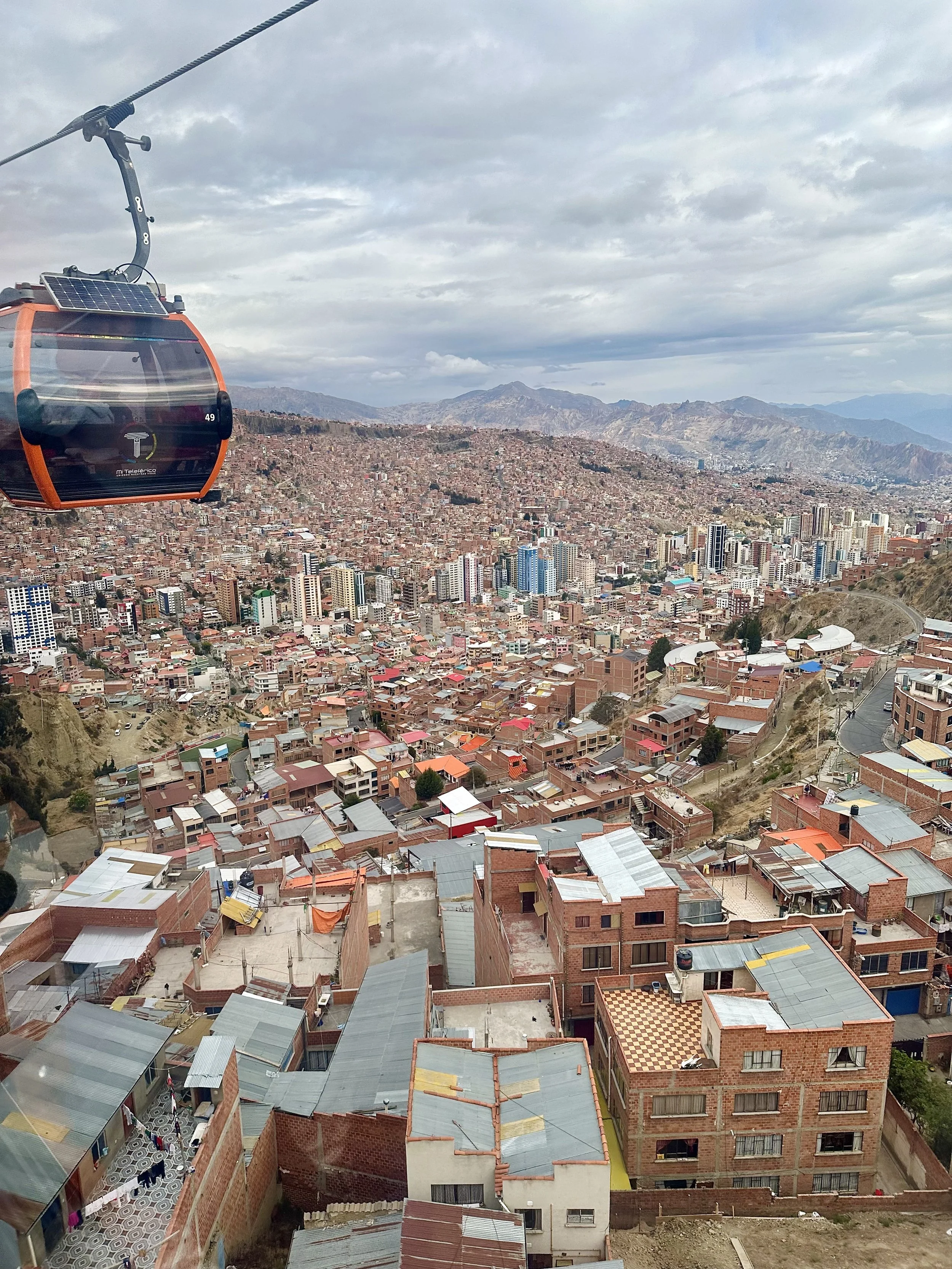La Paz, Bolivia
La Paz is the co-capital of Bolivia with Sucre, highest capital city in the world, and is located in the Andes Mountains. We didn't know quite what to expect and ended up finding a busy and interesting city with a ton to offer. We really enjoyed our time in La Paz and had a great week tasting some incredible food, riding gondolas, exploring the mountains outside the city, and learning about the history and people of Bolivia.
We wanted to relax on our first day in La Paz because of our insane travel day getting to Bolivia. We were able to find an Irish pub to have some comfort food and watch the Morocco-Spain World Cup game. We stopped at a grocery store since our hostel had a kitchen to cook in and then went to explore something called the Witches Market. We assumed there would be more…witchy things to see but it was mostly herbal supplements and dried roots. There were some dried and preserved llamas hanging from the ceilings which, well, we had some questions about. After the market we went to get advice from our tour bus company, Peru Hop, on which Death Road Biking company we should go with. That's right, Death Road Biking; more on that later. We also started to see all the amazing street art while walking around doing errands!

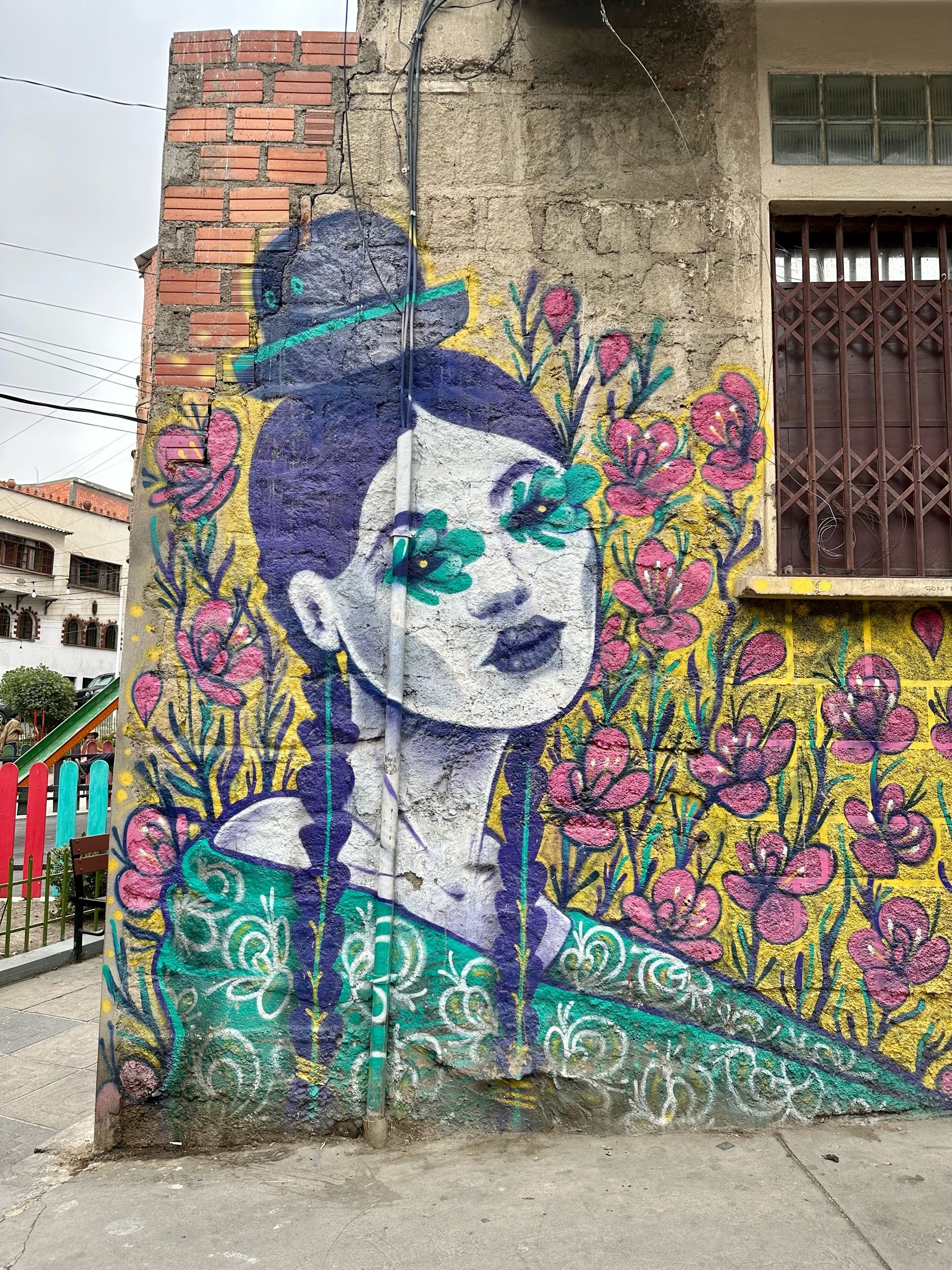
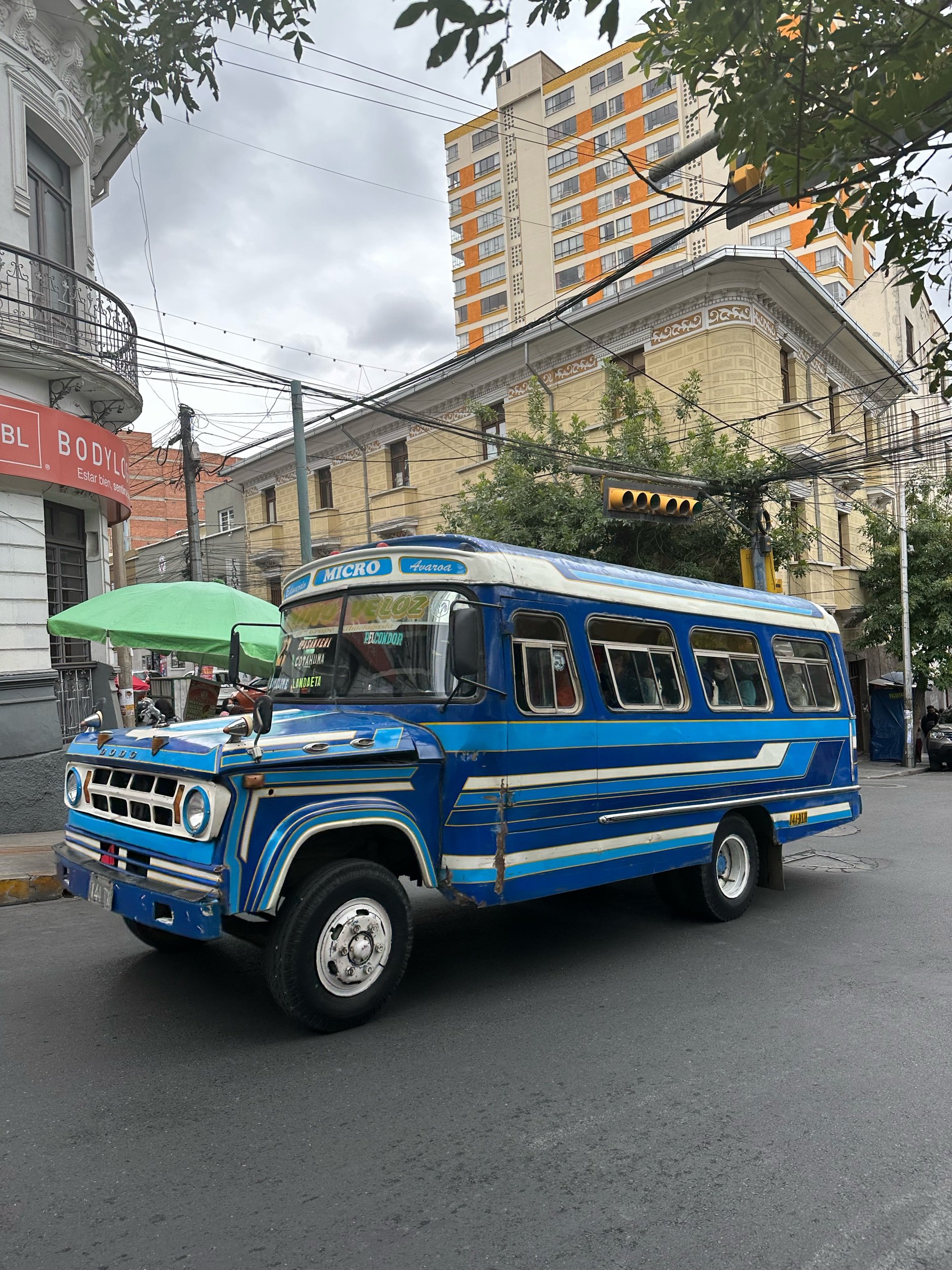

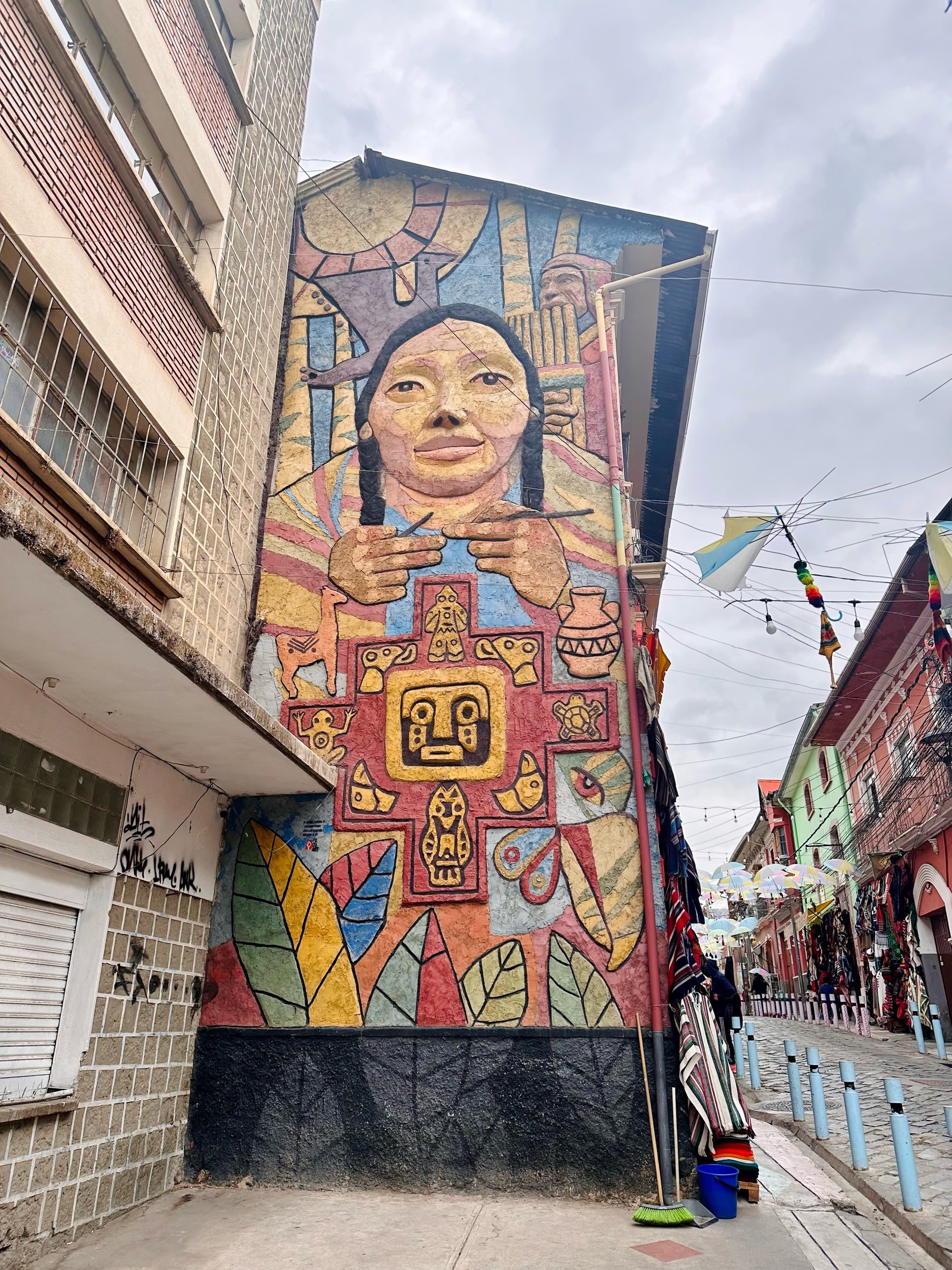
We then rode the Mi Teleferico, La Paz’s Cable Car Transit System! They took gondolas that you find at ski resorts and installed them all around La Paz. La Paz is in a big valley that looks like the world’s largest serving bowl. The Cable Cars can take you up and out of the main valley to the surrounding neighborhoods at the top of the basin or to different parts of La Paz itself. We bought tickets for a circuit so we did a complete lap of the city, sometimes riding at the top of the ridge of the valley and other times going into the ravine at the center of the city. We saw some incredible views of the different neighborhoods and landmarks around town. La Paz is a very bustling city with skyscrapers, universities, and plenty of parks and futbol fields. For dinner we wanted some more comfort food so found some delicious Ramen at Restaurant Japones Kenchan.
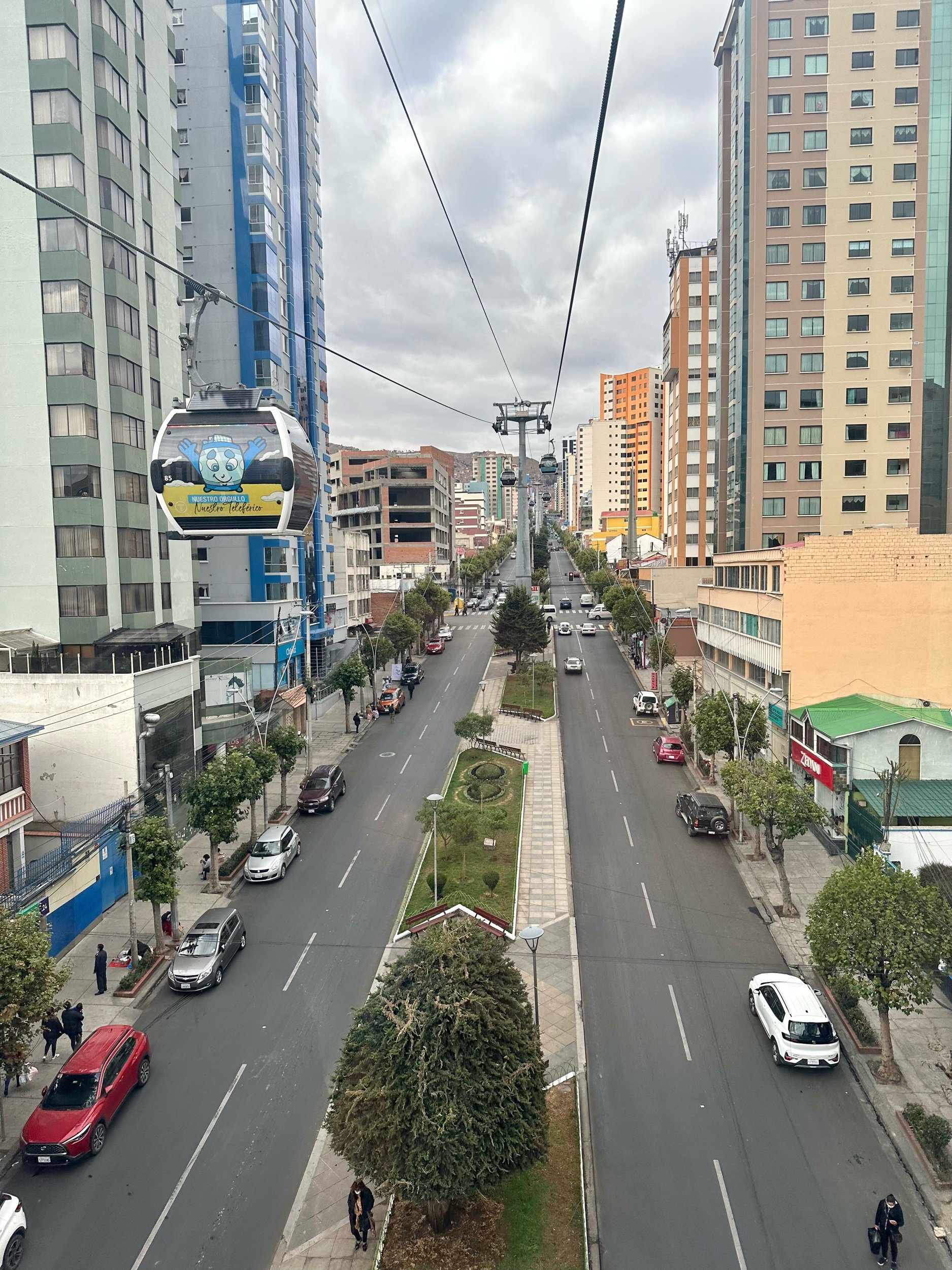
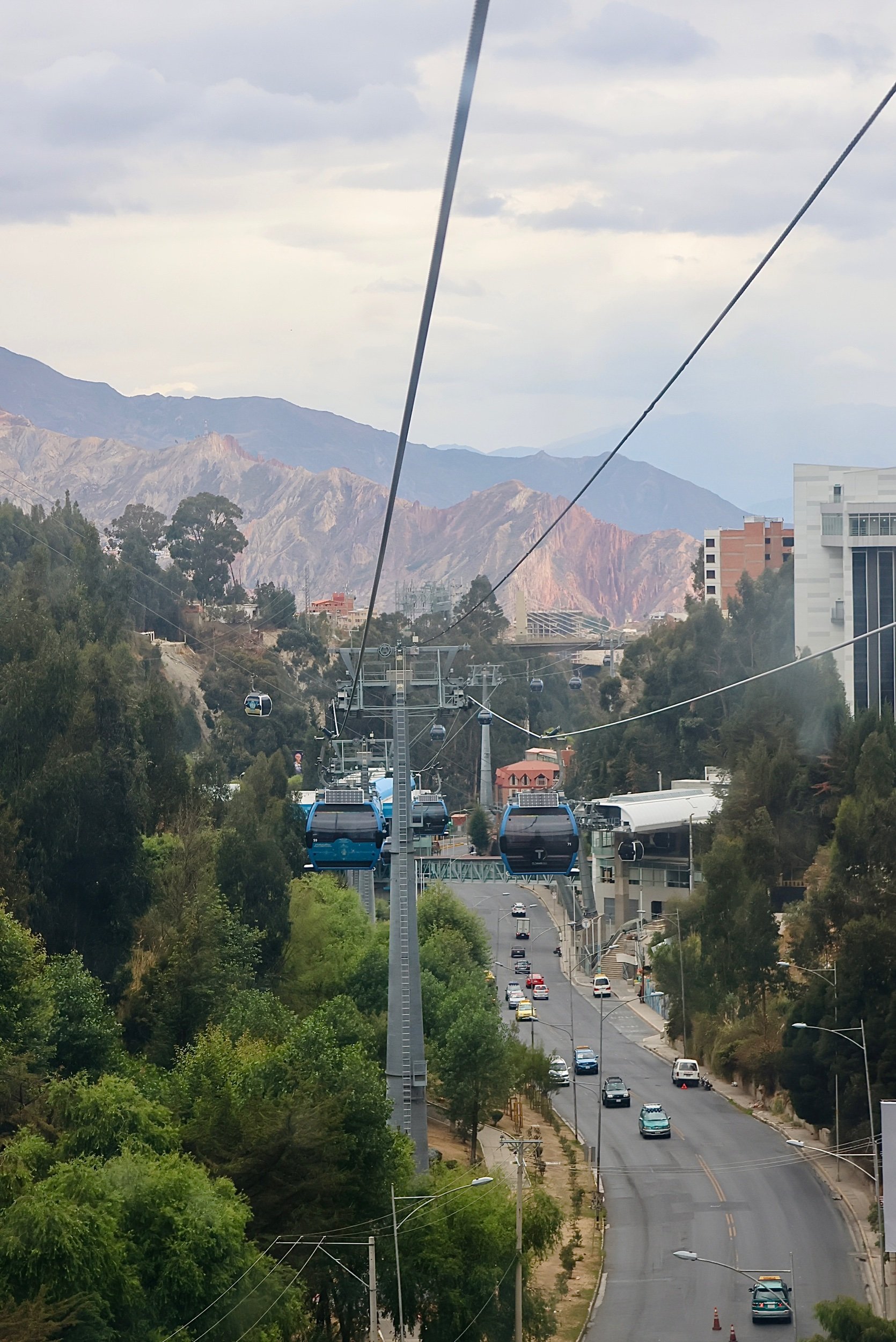
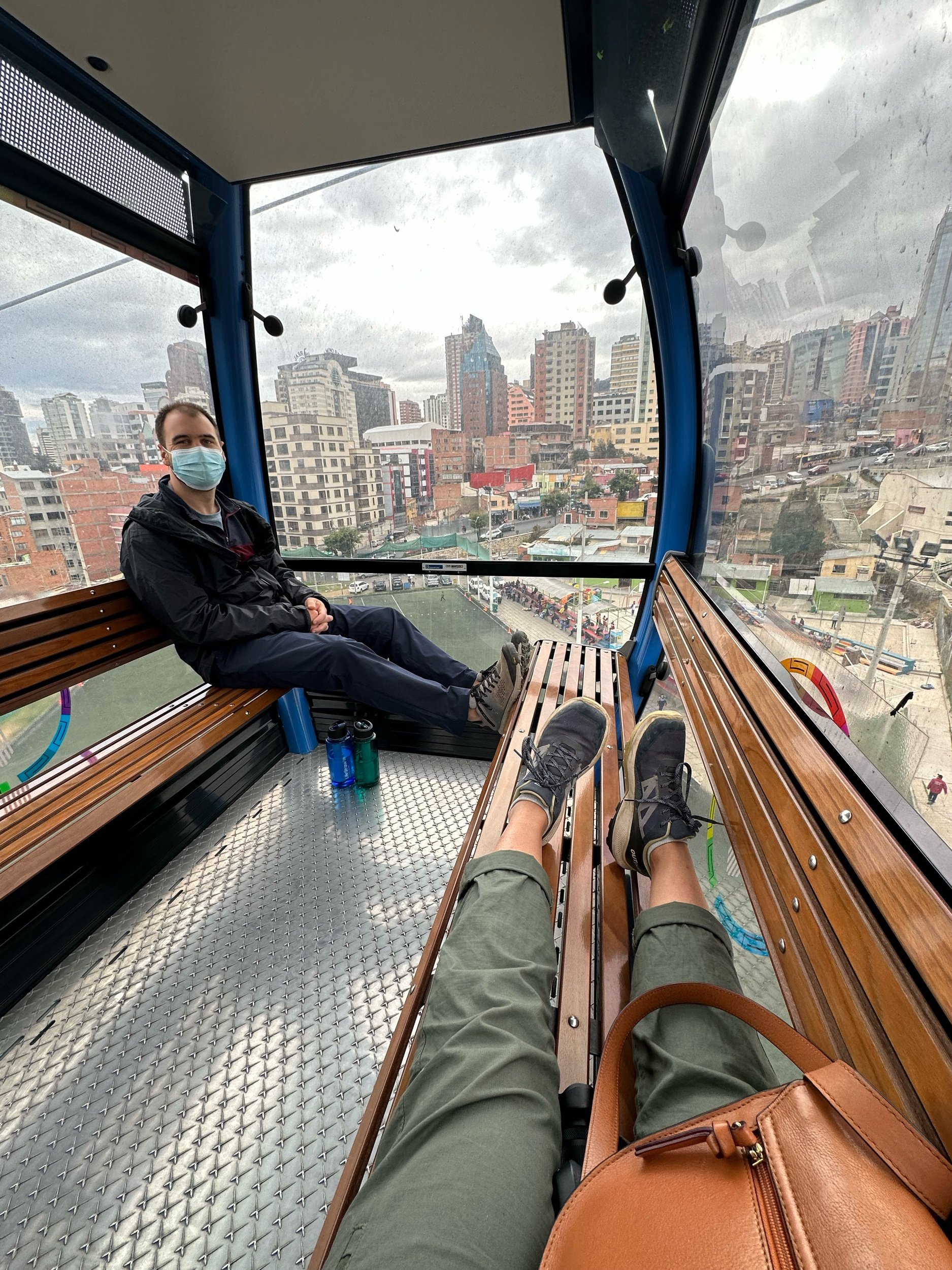
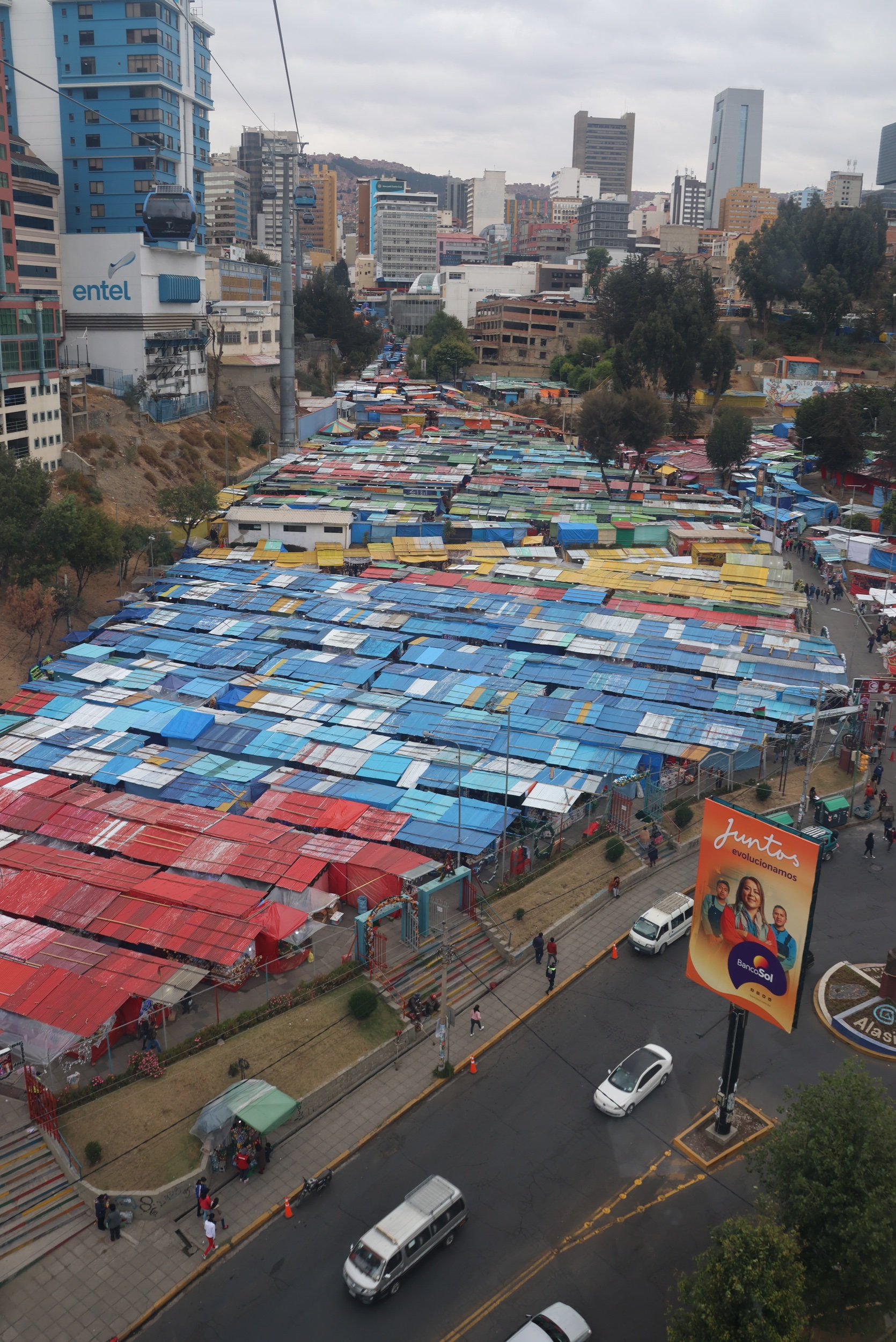
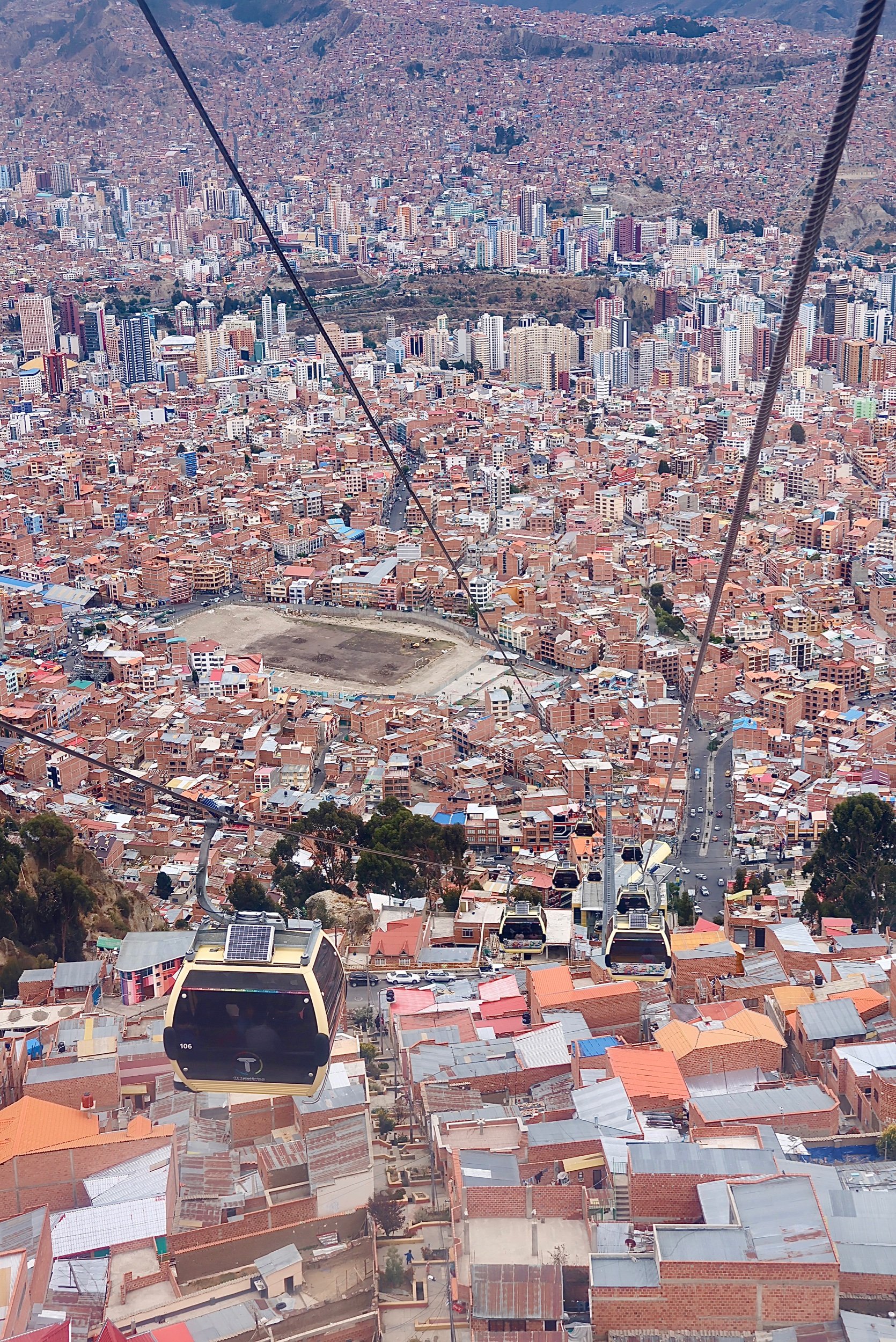
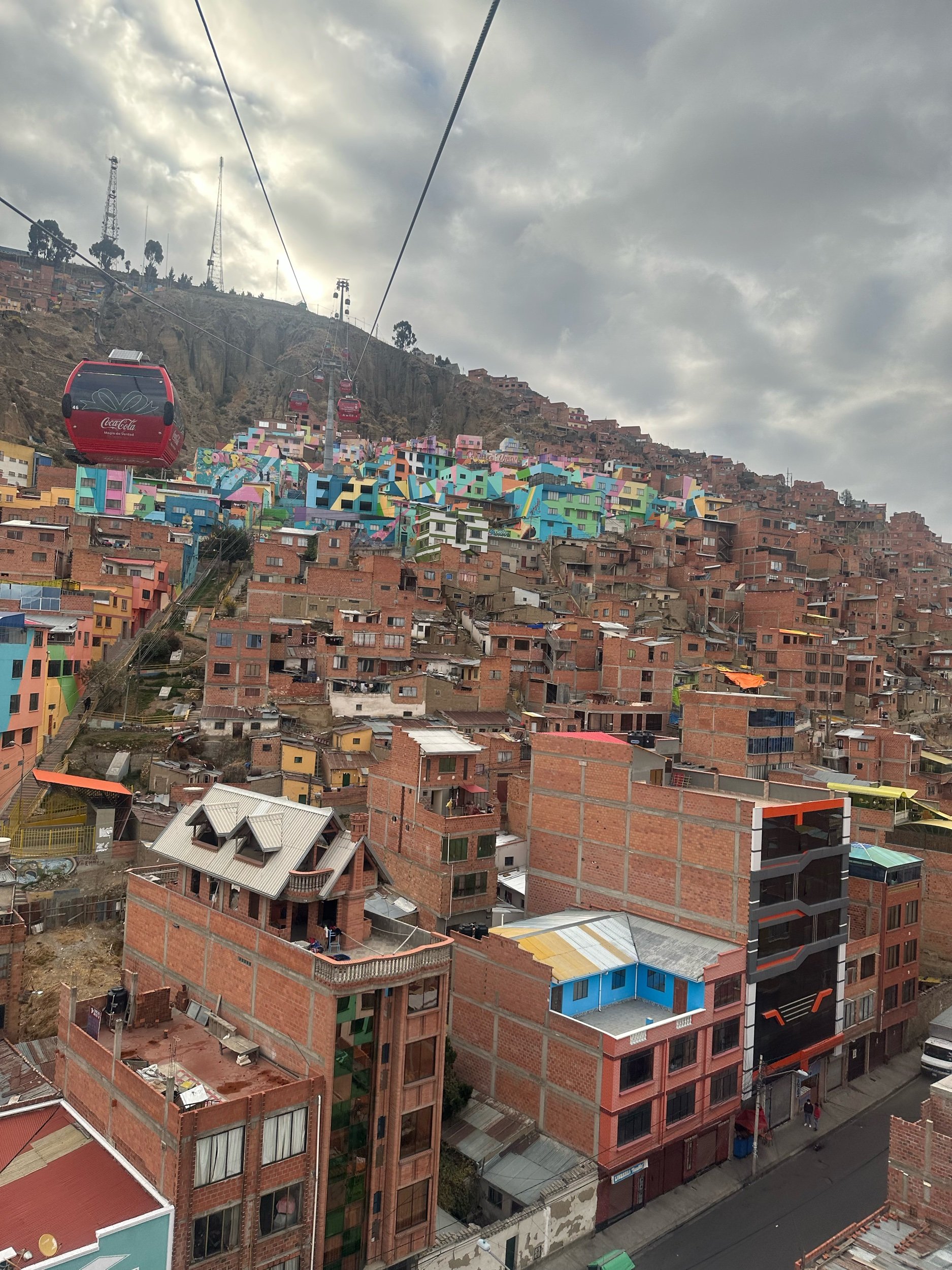
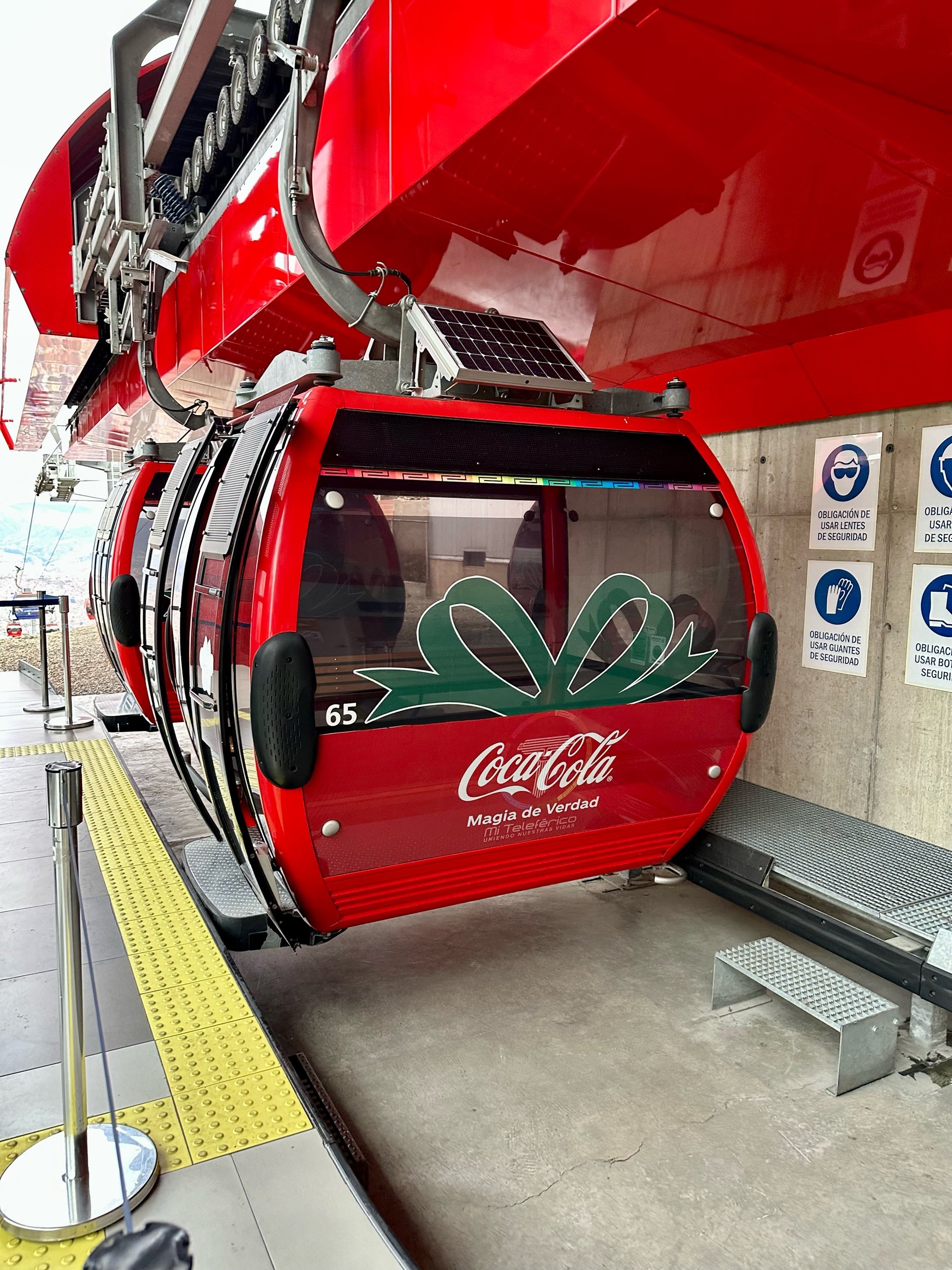
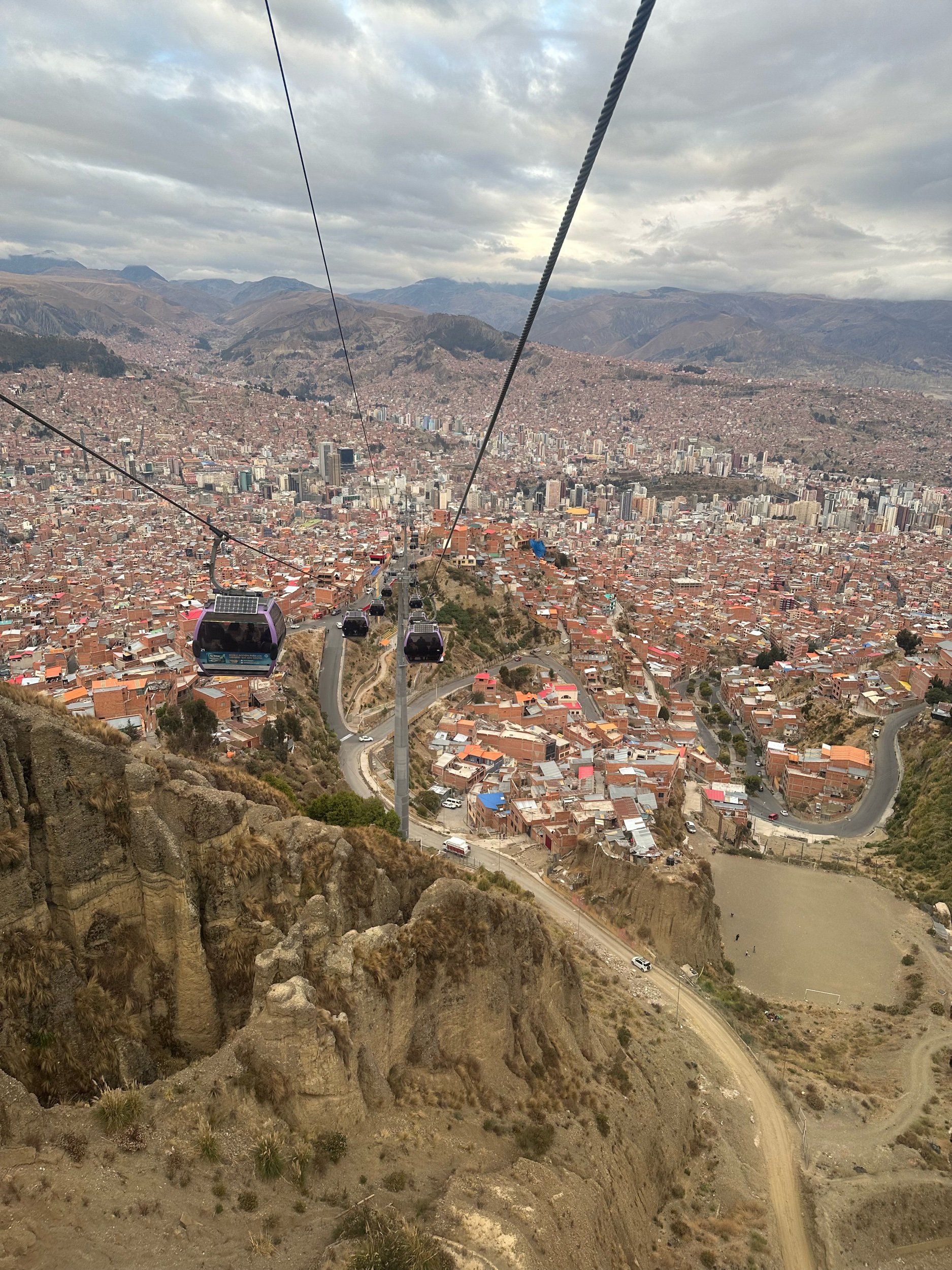
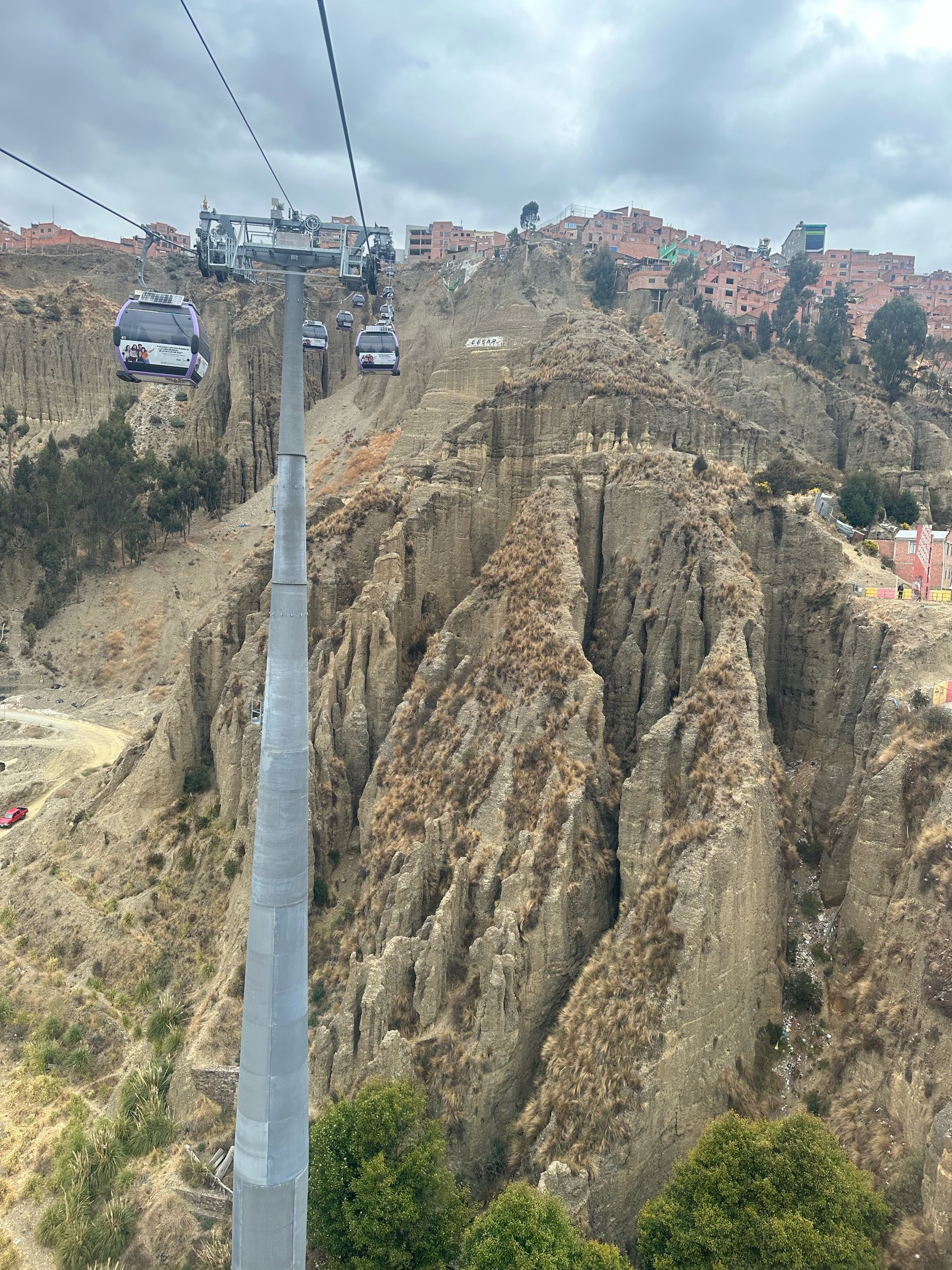

The next day we wanted to properly explore the city and signed up for the Red Cap Walking tour. The first part of the tour was spent talking about the famous San Pedro Prison, an inmate-run prison right in downtown La Paz. There are no guards in the prison, just along the outside patrolling the perimeter, and basically it's an entire tiny city run and organized by the inmates. We then walked to a local market area. It wasn't really one single market but rather multiple streets and sidewalks filled with food stalls where you can find anything you'd want in terms of food. Our tour then took us back to the Witches Market where our guide was able to explain why there were preserved, younger llamas hanging in the markets. The native Bolivians use them as part of various ceremonies in order to please the spirits and bring good karma into new buildings and homes.
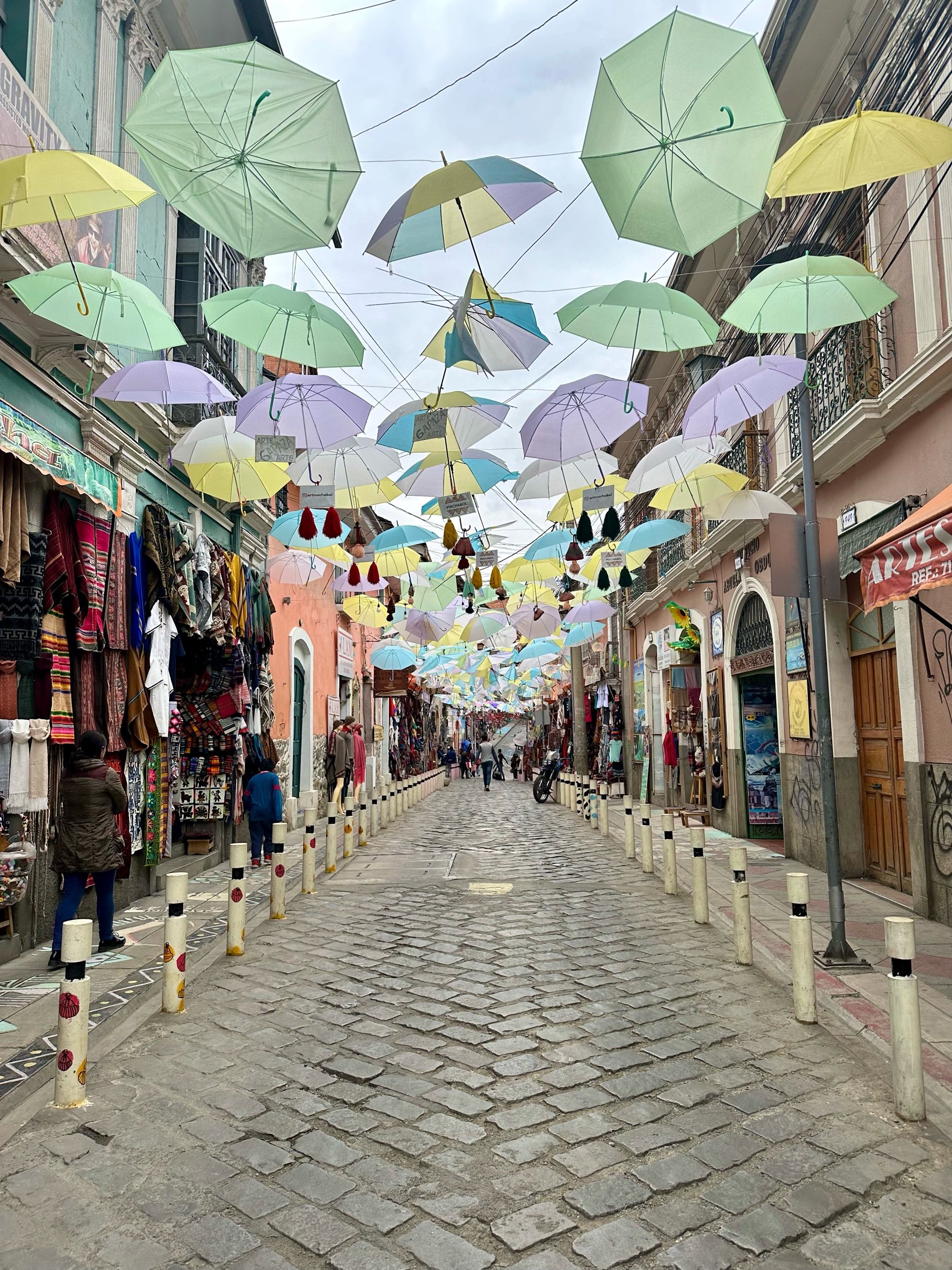
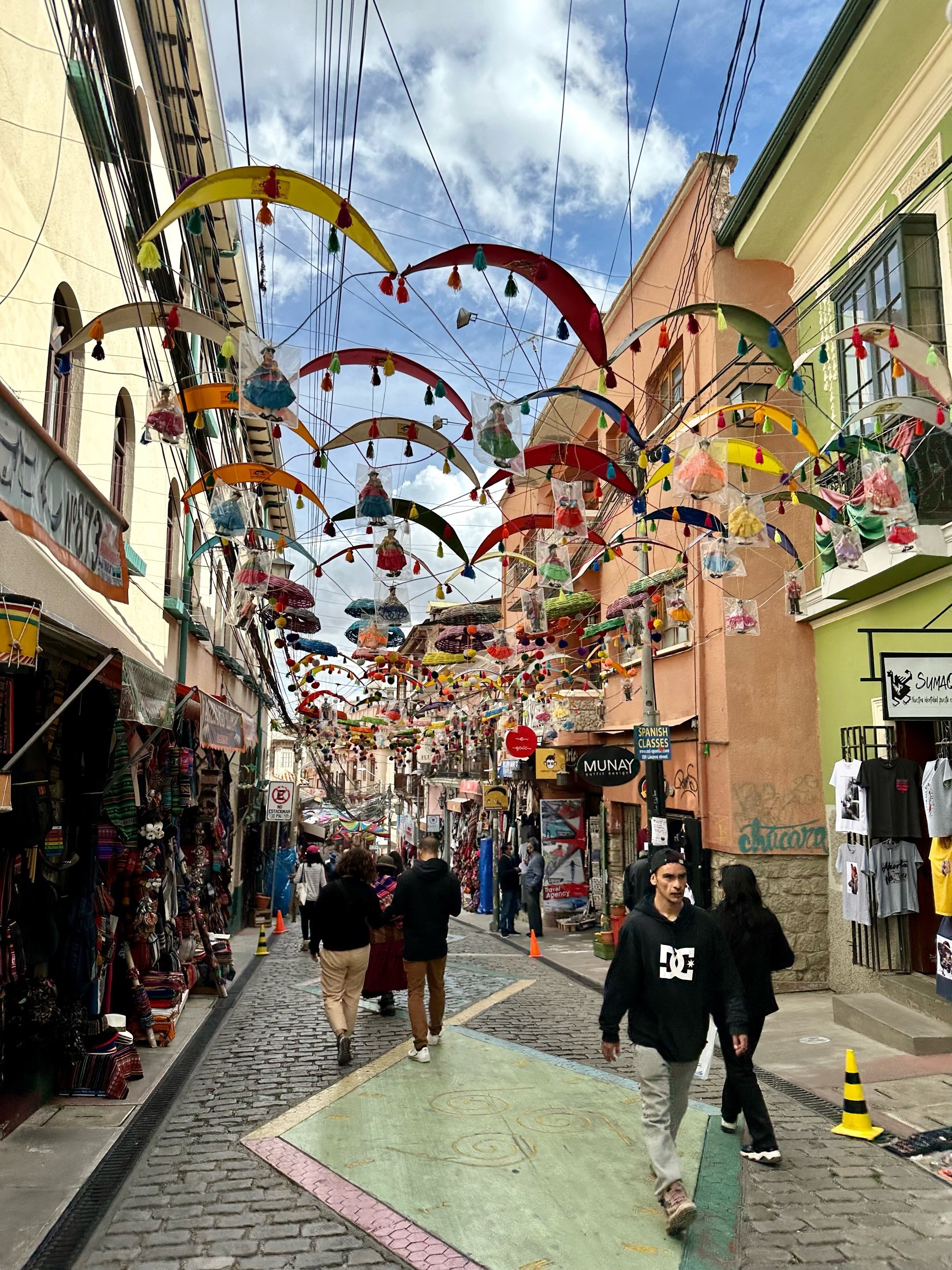
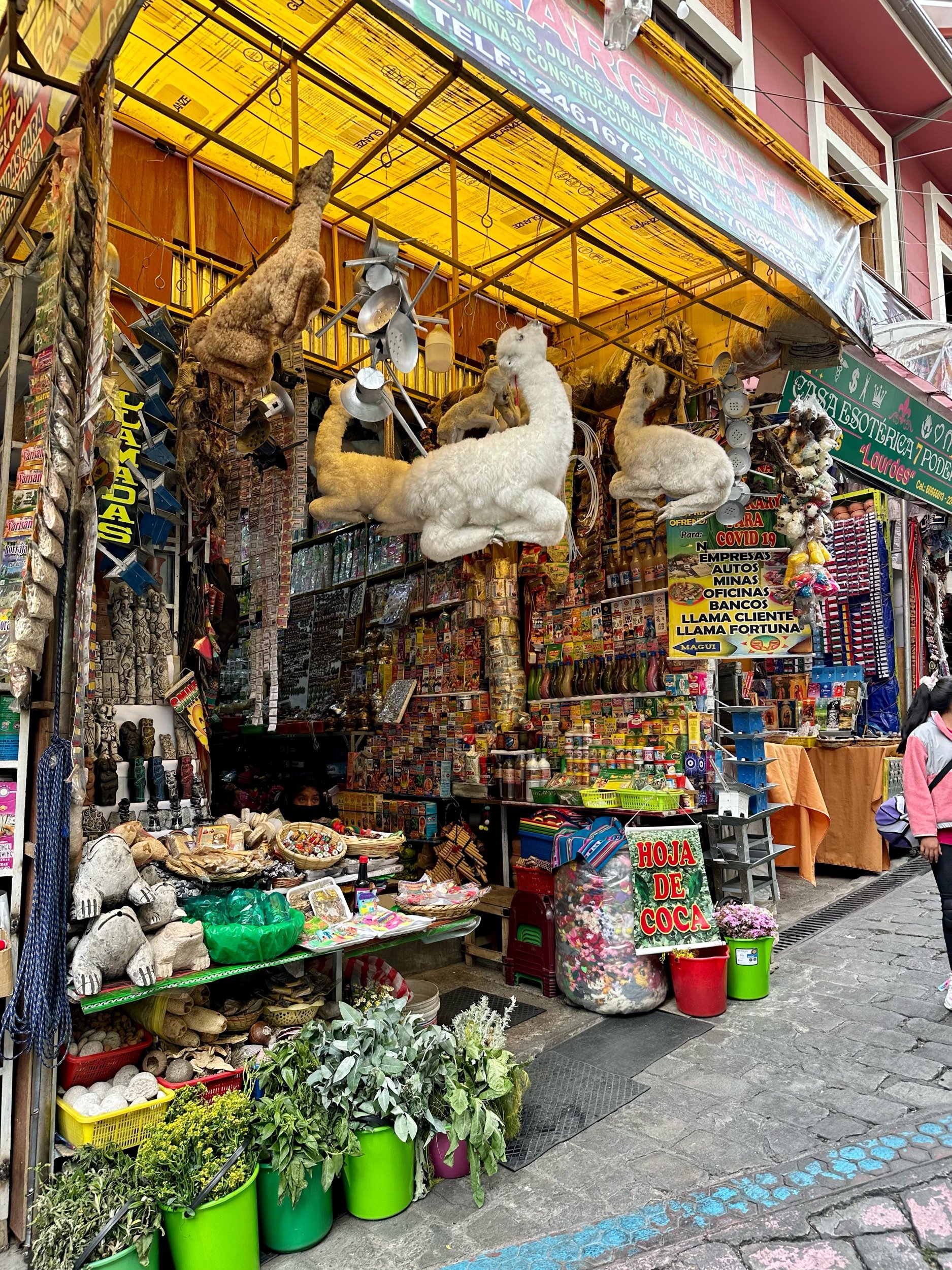
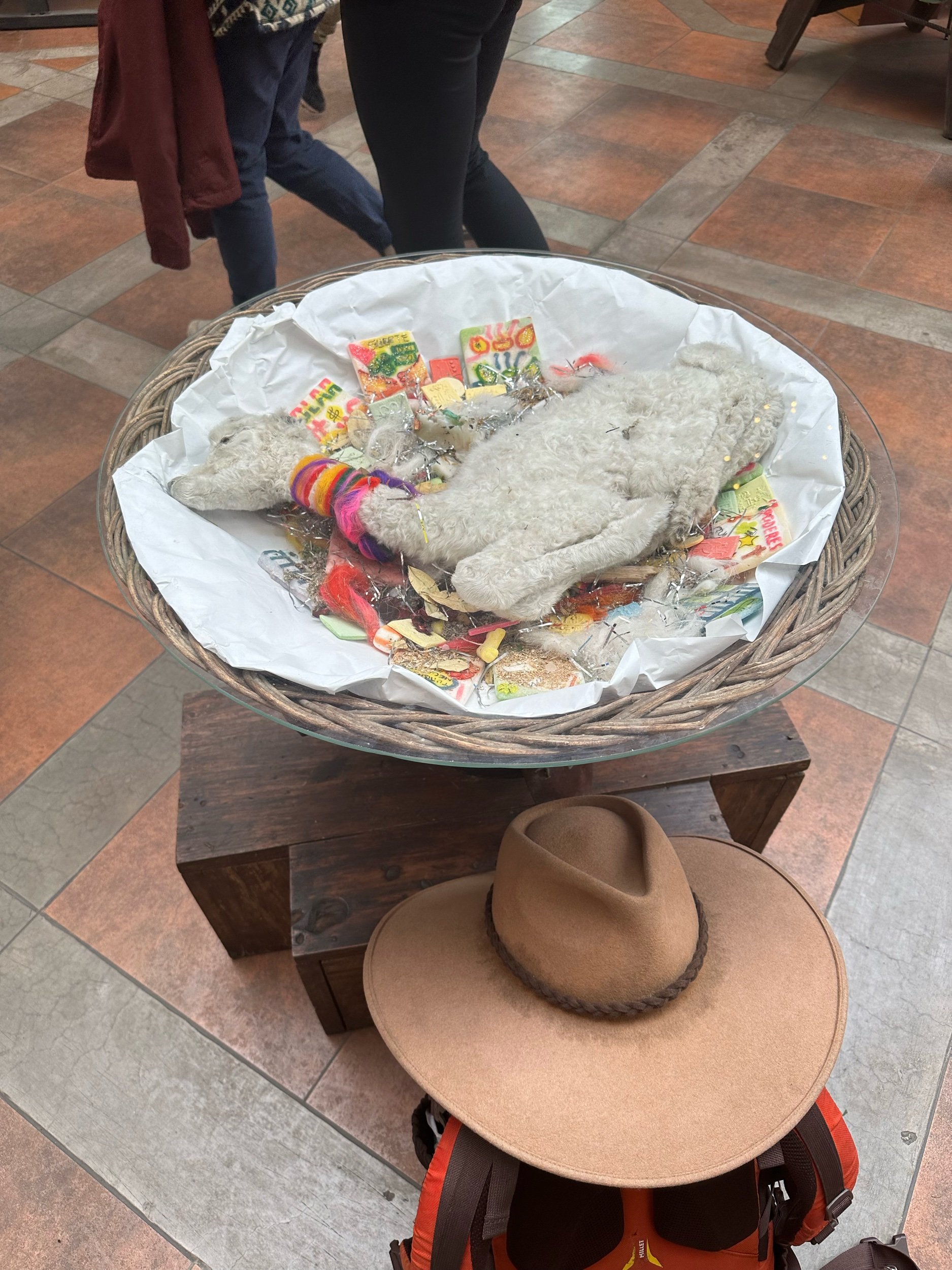
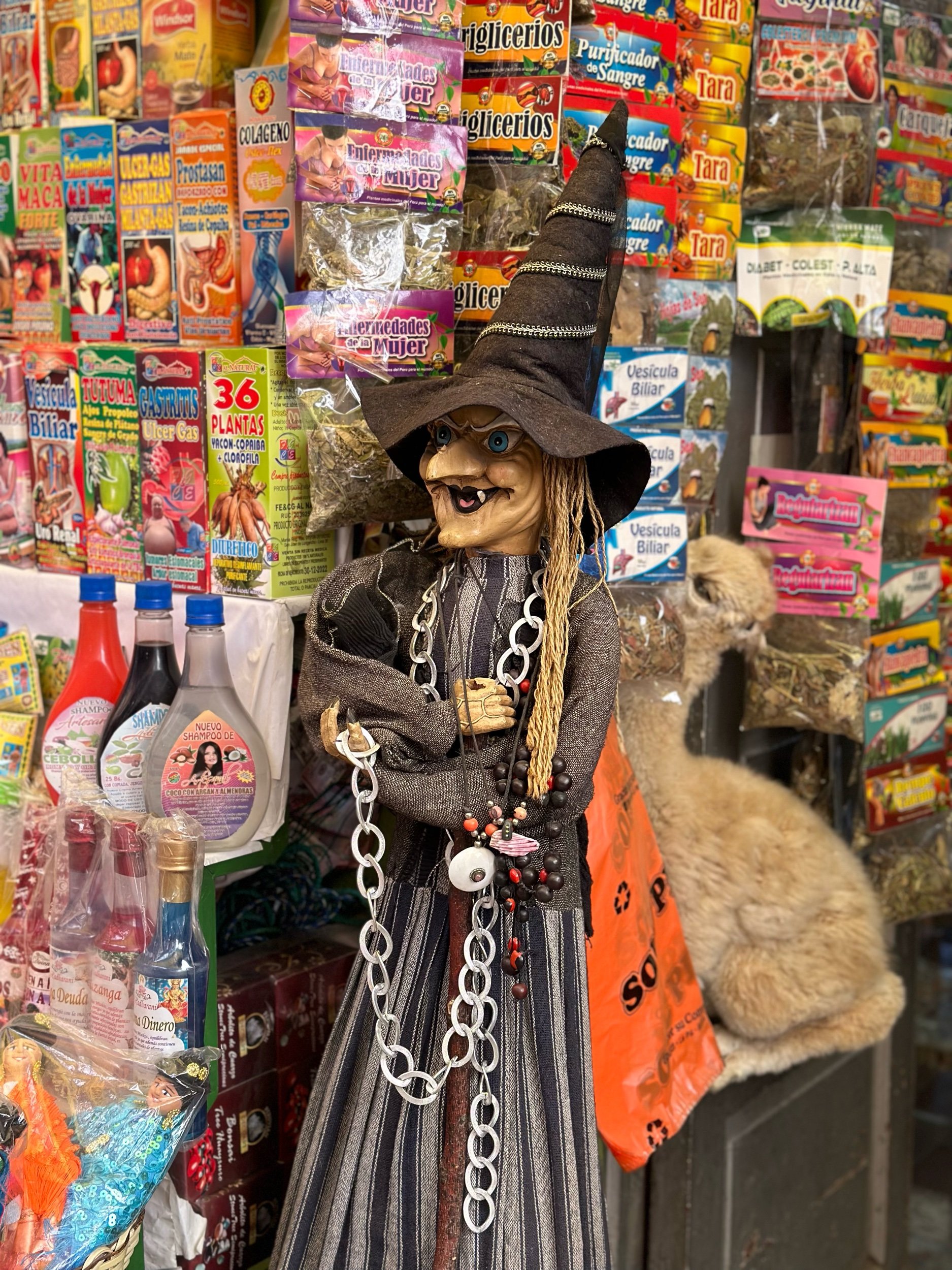
The next stop was at Basilica San Francisco in the Plaza Mayor de San Francisco. This church was one of the first places that the native Bolivians started to convert to Catholicism during the Spanish Occupation. La Paz is built along a river that cuts through the middle of town. In the Spanish Colonial times, the river was the divide between the Spanish parts of town and the Bolivian parts of town. The Basilica was built right on the edge of the river and had some visual elements of Inca theology built into the church. So the native people could a.) easily get to the church and b.) see the concepts they were familiar with in the building and were more easily convinced to start learning about the Catholic Faith. So this church has some iconography that you won't see anywhere else in the world.
We then headed to the main plaza of La Paz, Plaza Murillo. La Paz has a long and chaotic political history and has dealt with a lot of political turmoil in recent years. This square was the site of multiple revolutions and protests and our guide filled us in on the recent troubles between the people and the government. It seems that there are common refrains between the countries of South America that they continue to struggle with: a history of discrimination towards the native people, populations with different backgrounds and histories, corrupt governments that enrich themselves at the cost of the local people and resources, and a struggle to provide a good quality of life for all citizens not just those with money. It also turns out that one of the recent presidents, Gonzalo Sánchez de Lozada, ended up fleeing to the United States in exile, so the bad blood between the US and Bolivia makes more sense.

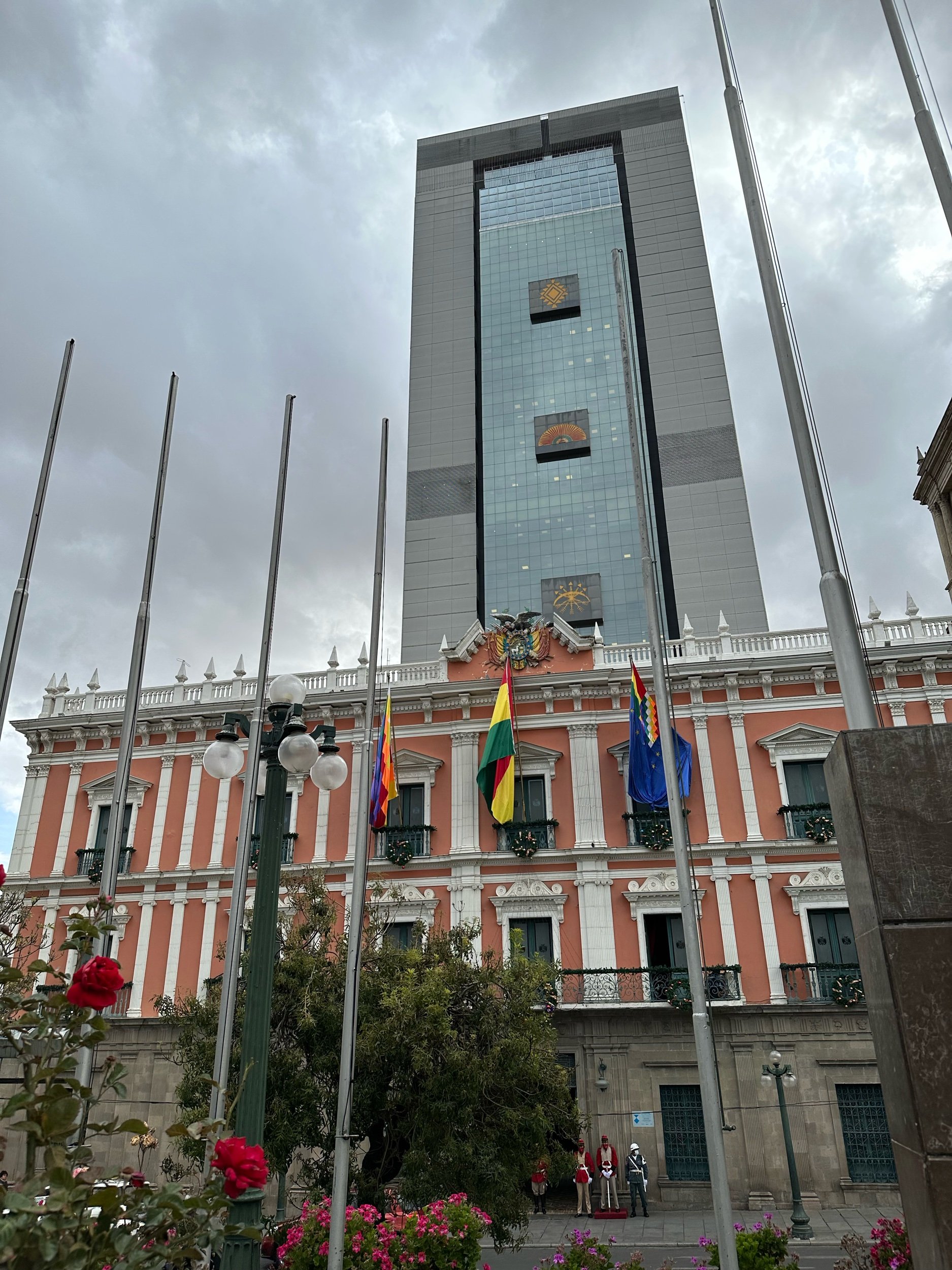

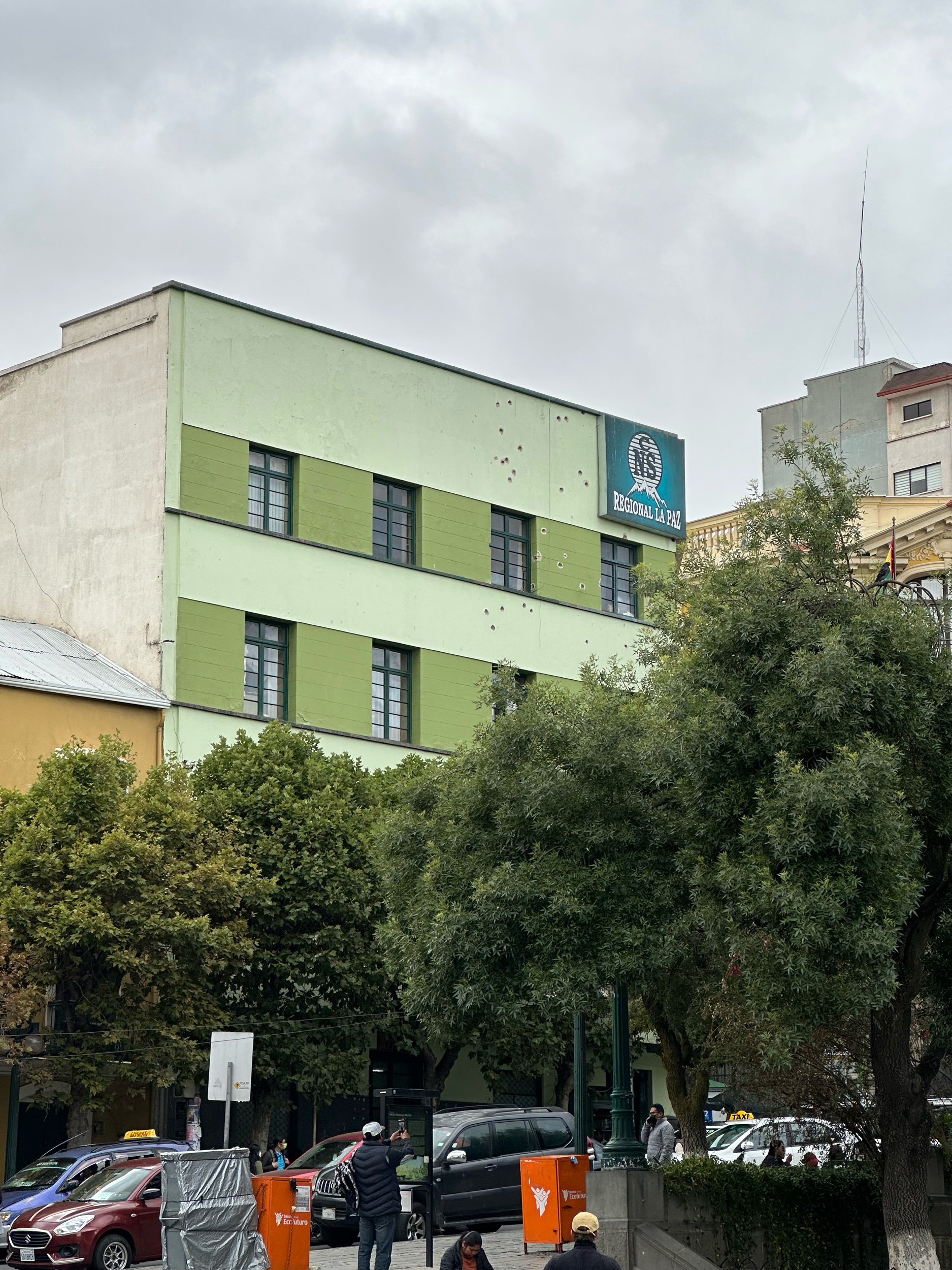
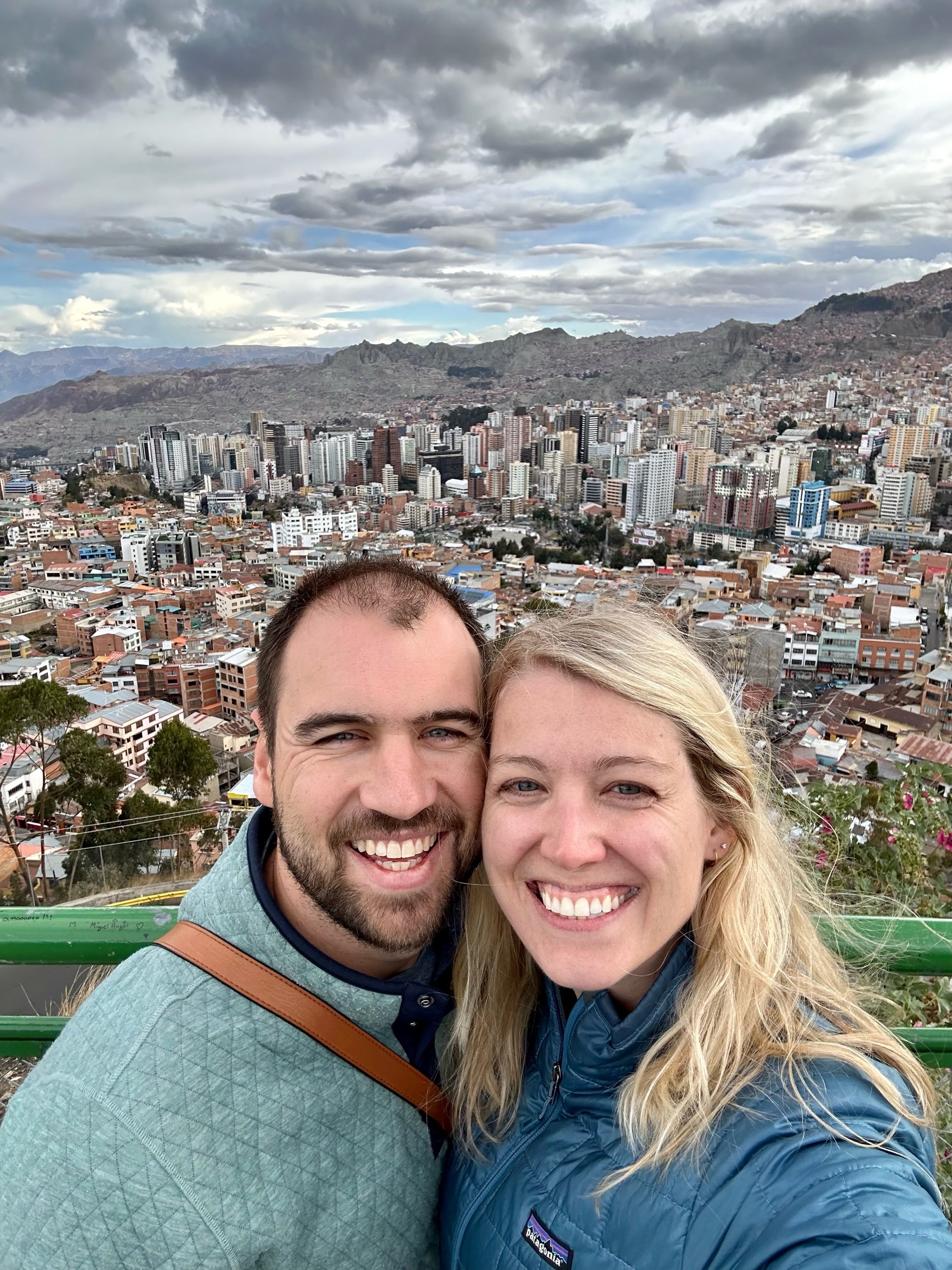
Our day ended with some incredible food. We stopped for a huge Bubble Waffle Cone Ice Cream an hour before dinner. You read that right, it was ice cream in a cone made of a waffle and topped with all sorts of toppings. This thing could have fed an entire family. Not even an hour later we had reservations at a really great Bolivian Tasting Menu Restaurant called Mi Chola. The food was incredible and featured many local and traditional ingredients with a modern twist. We had hen eggs, purple potato goyza, corn hush puppies, a llama stuffed white potato, chicken in peanut sauce, sauteed mushrooms, beef ribs with a cactus puree, and purple corn ice cream. 10/10 would definitely go back again!
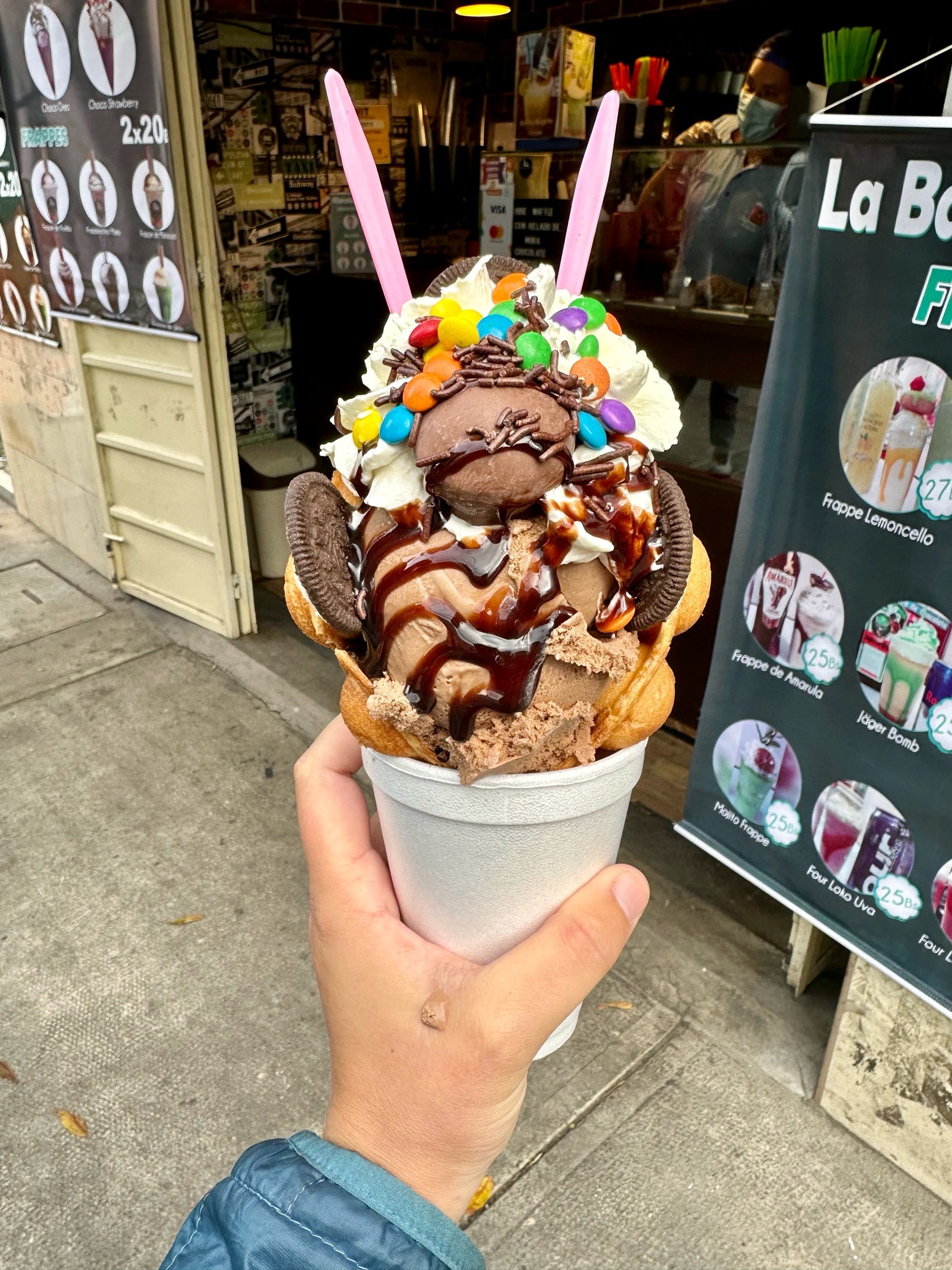

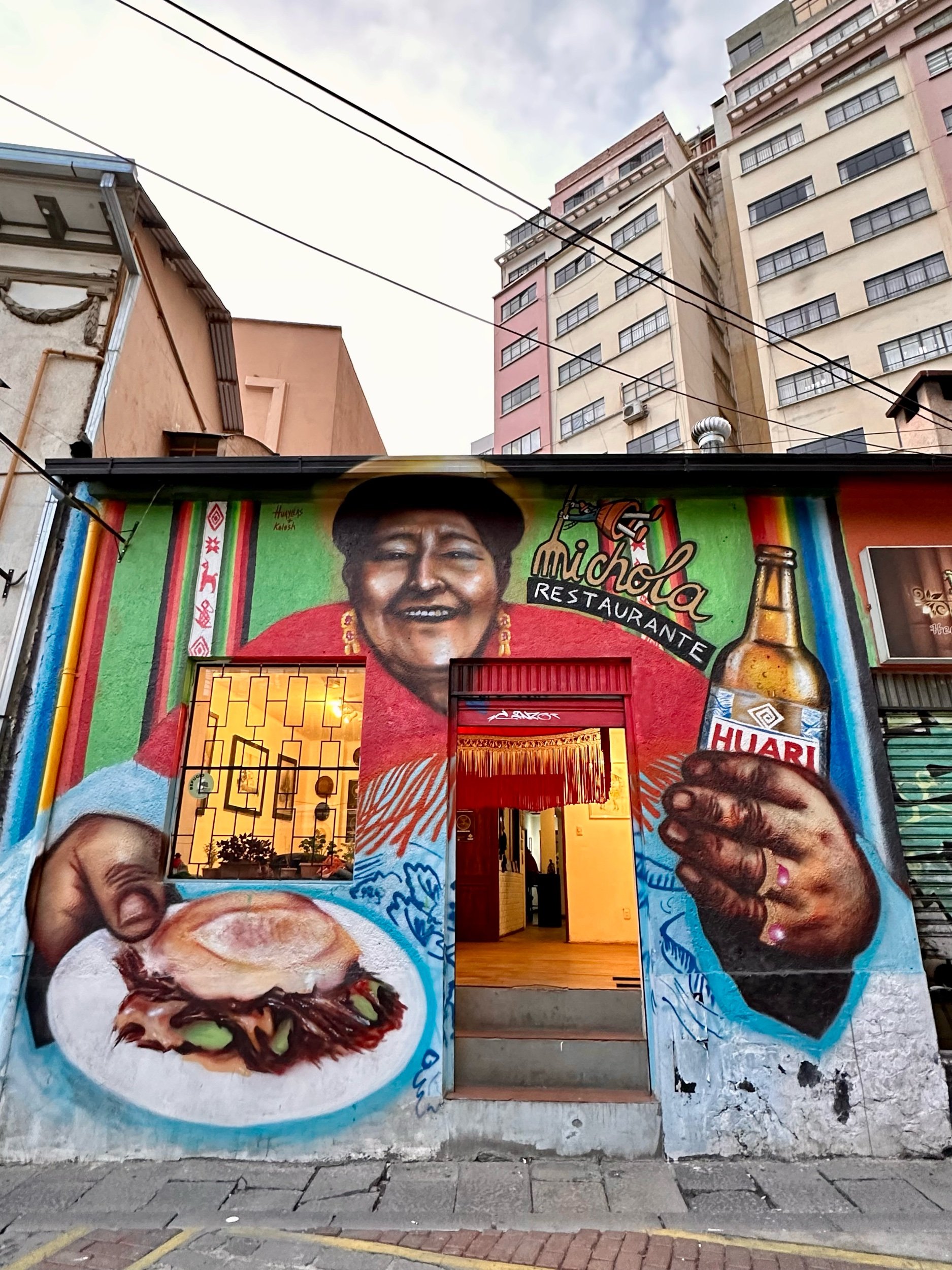
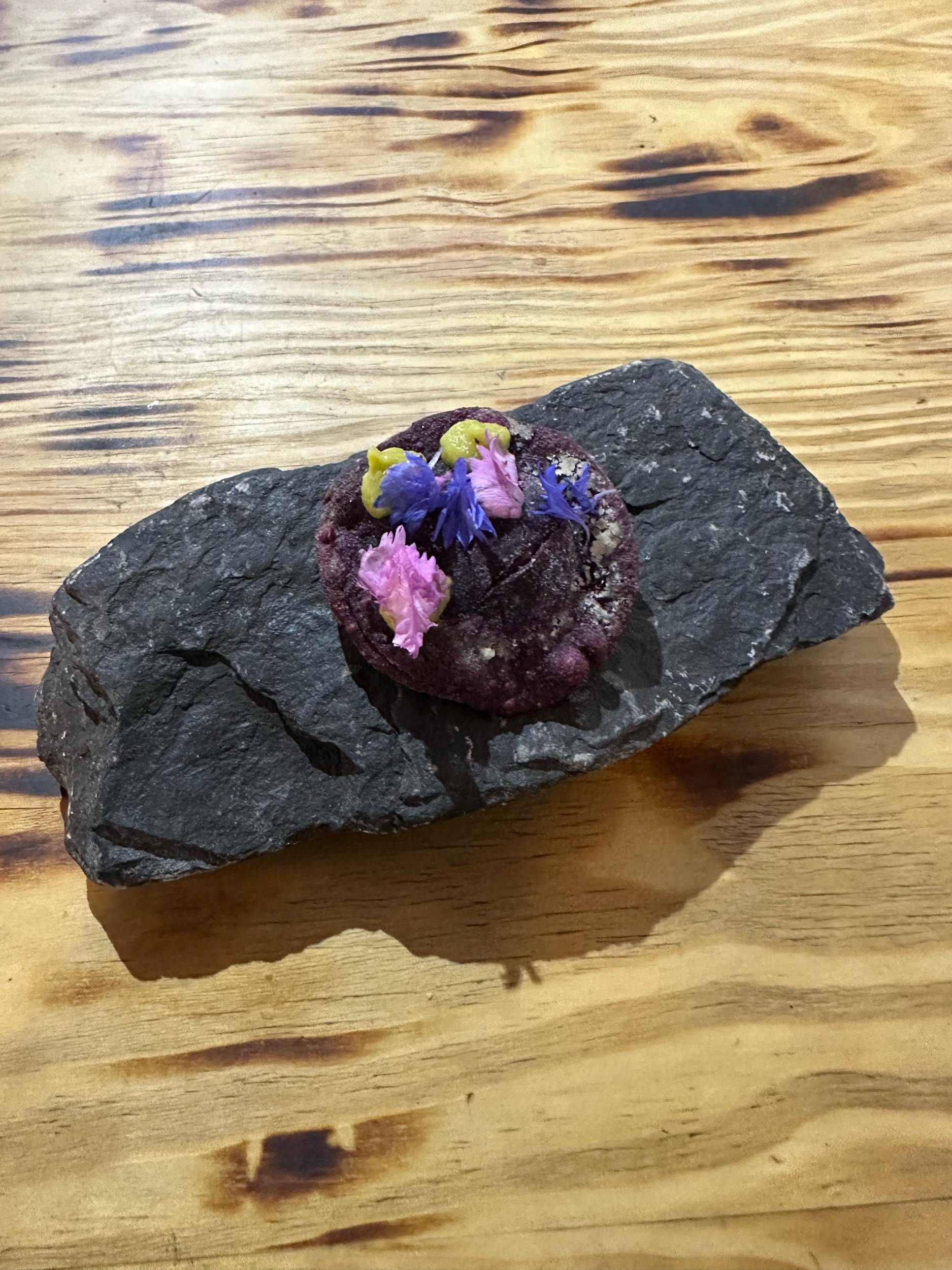
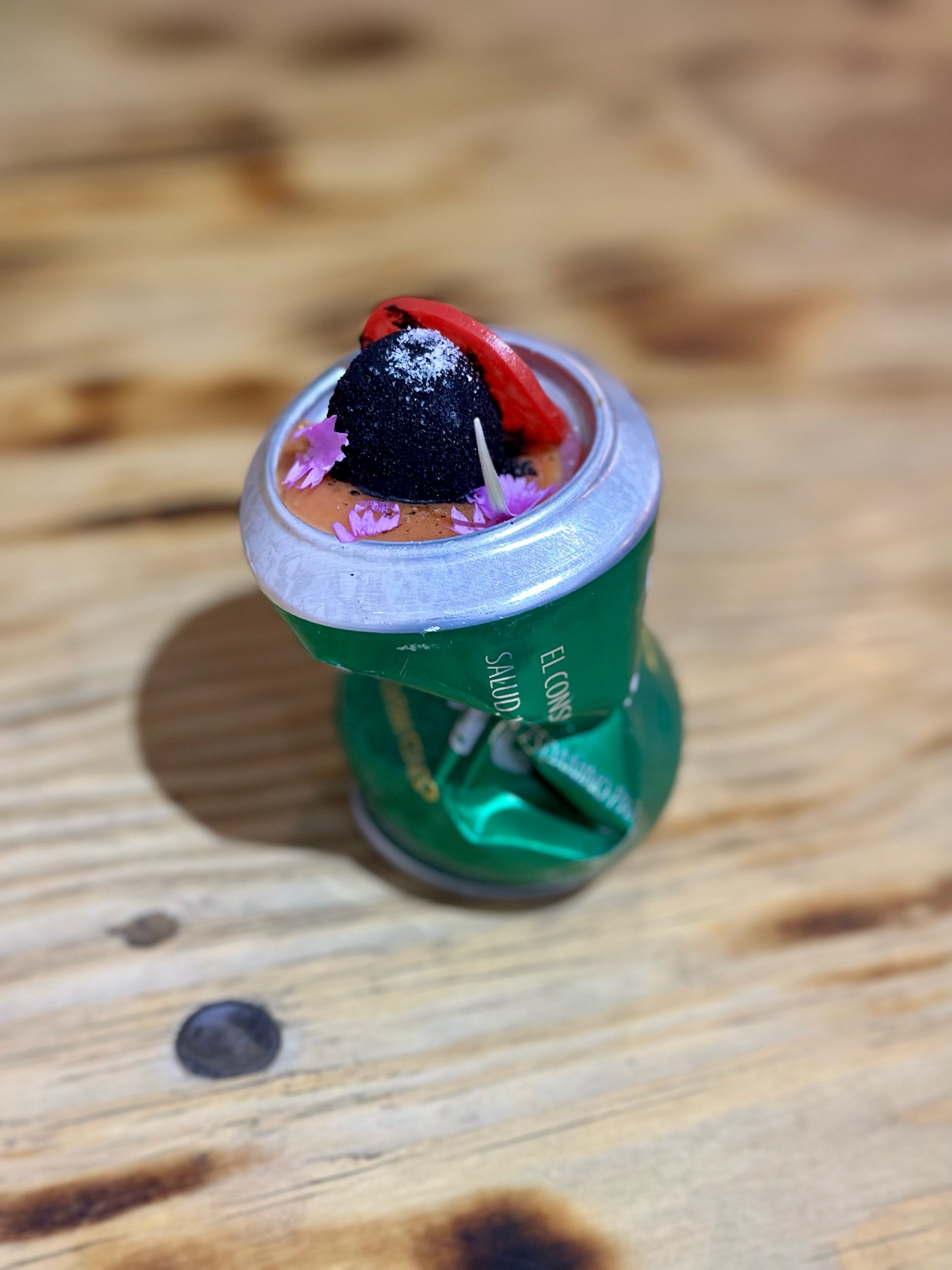
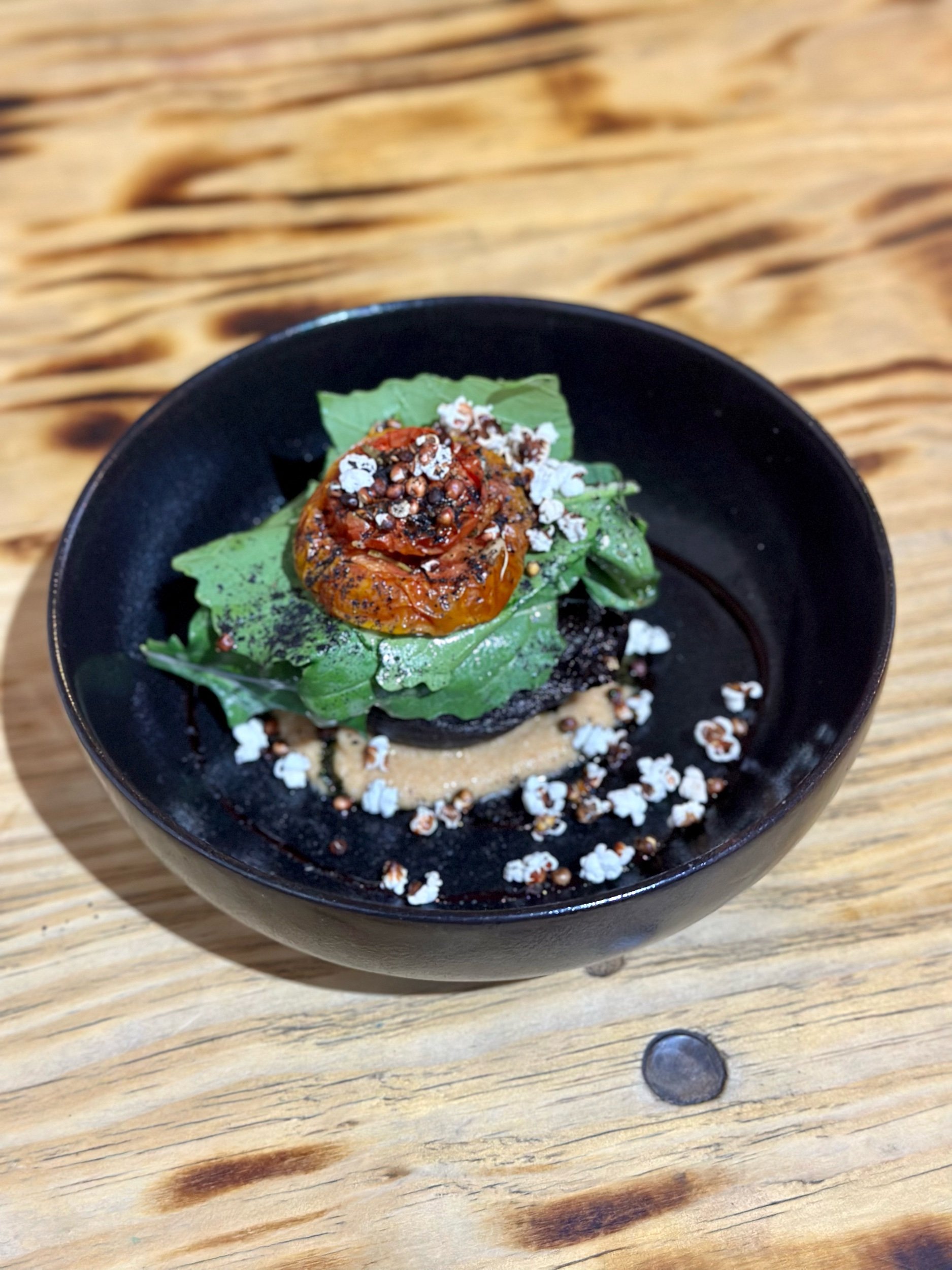


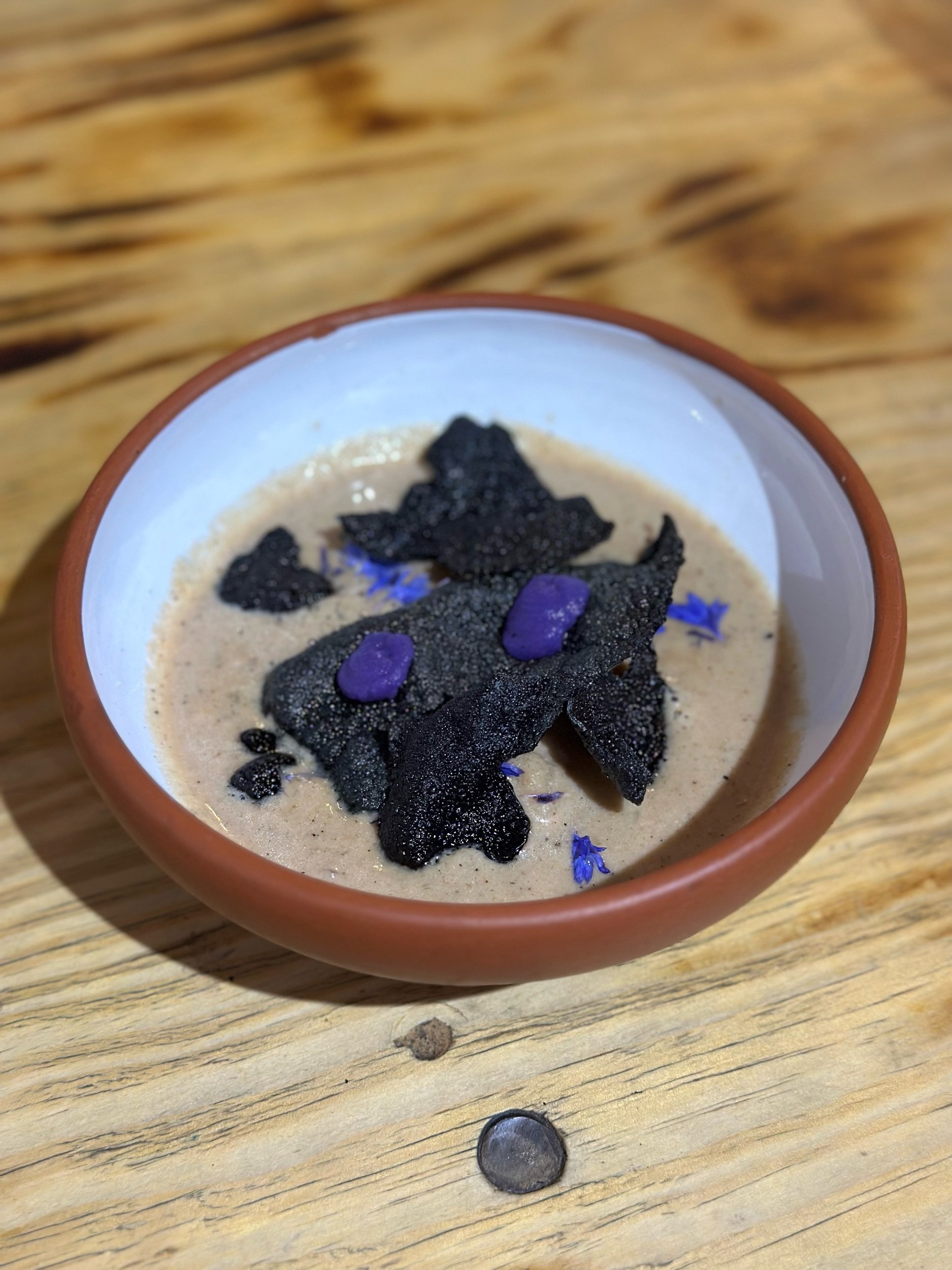
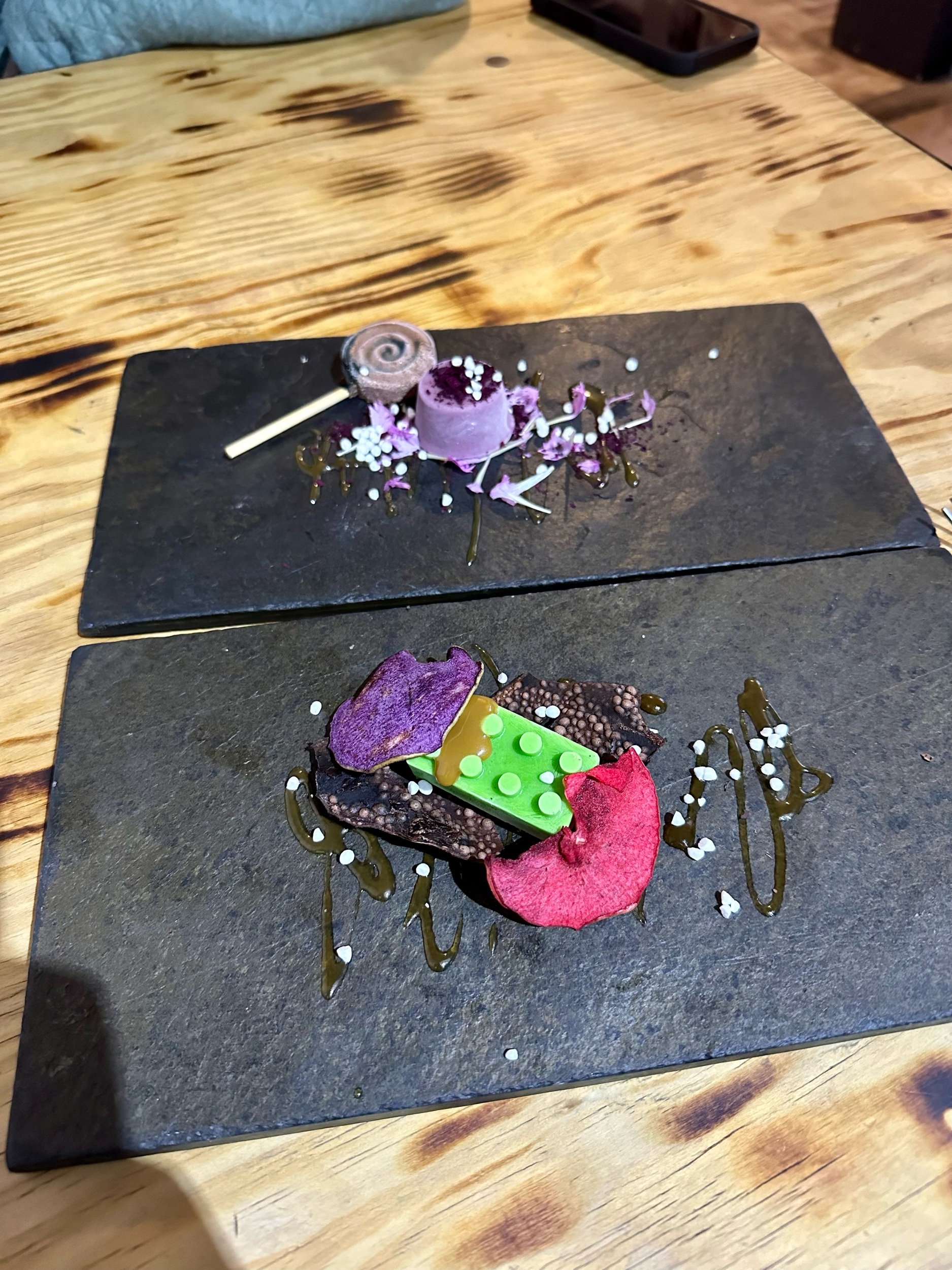
Day 3 in La Paz was our Death Road adventure. Death Road was a highway connecting La Paz to the Amazon Jungle through the Andes Mountains. It was built on the side of the mountains and has many narrow sections with huge cliffs to the valley floor. It was the only highway directly connecting the area around La Paz with the Jungle so there were a lot of accidents resulting in, well, it's called Death Road for a reason. In 2006 they finished a modern and much safer highway and this road is now only used by locals who live along the road in the mountains, and also by Cycling Tour Companies. Our cycling trip began at 4600m/15,200ft in a mountain pass outside of La Paz. Luckily we started our descent on a paved highway so we had a chance to get comfortable with our bikes and zooming downhill. We then hopped back in our van for our last uphill to the start of the gravel-road portion.



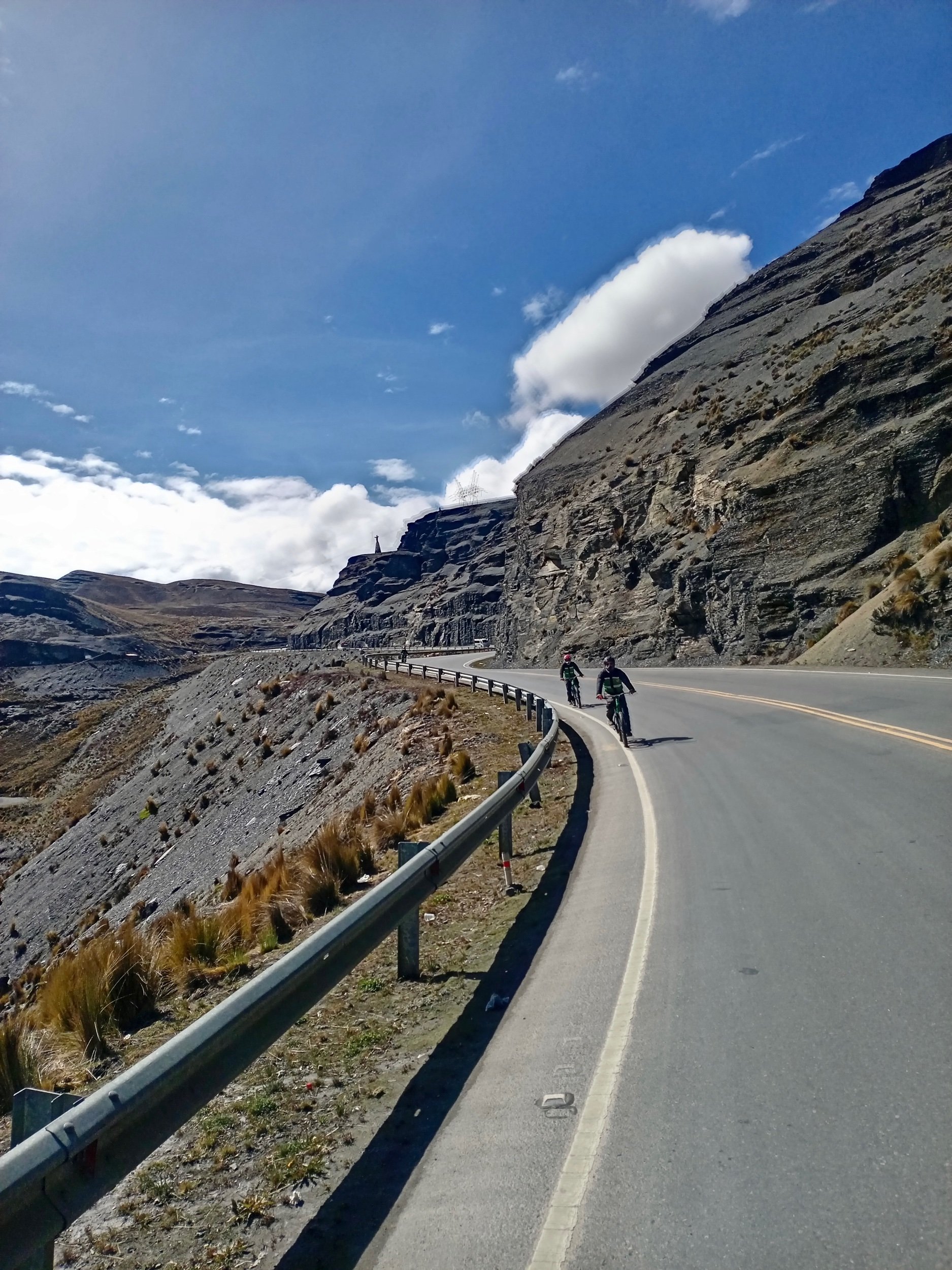
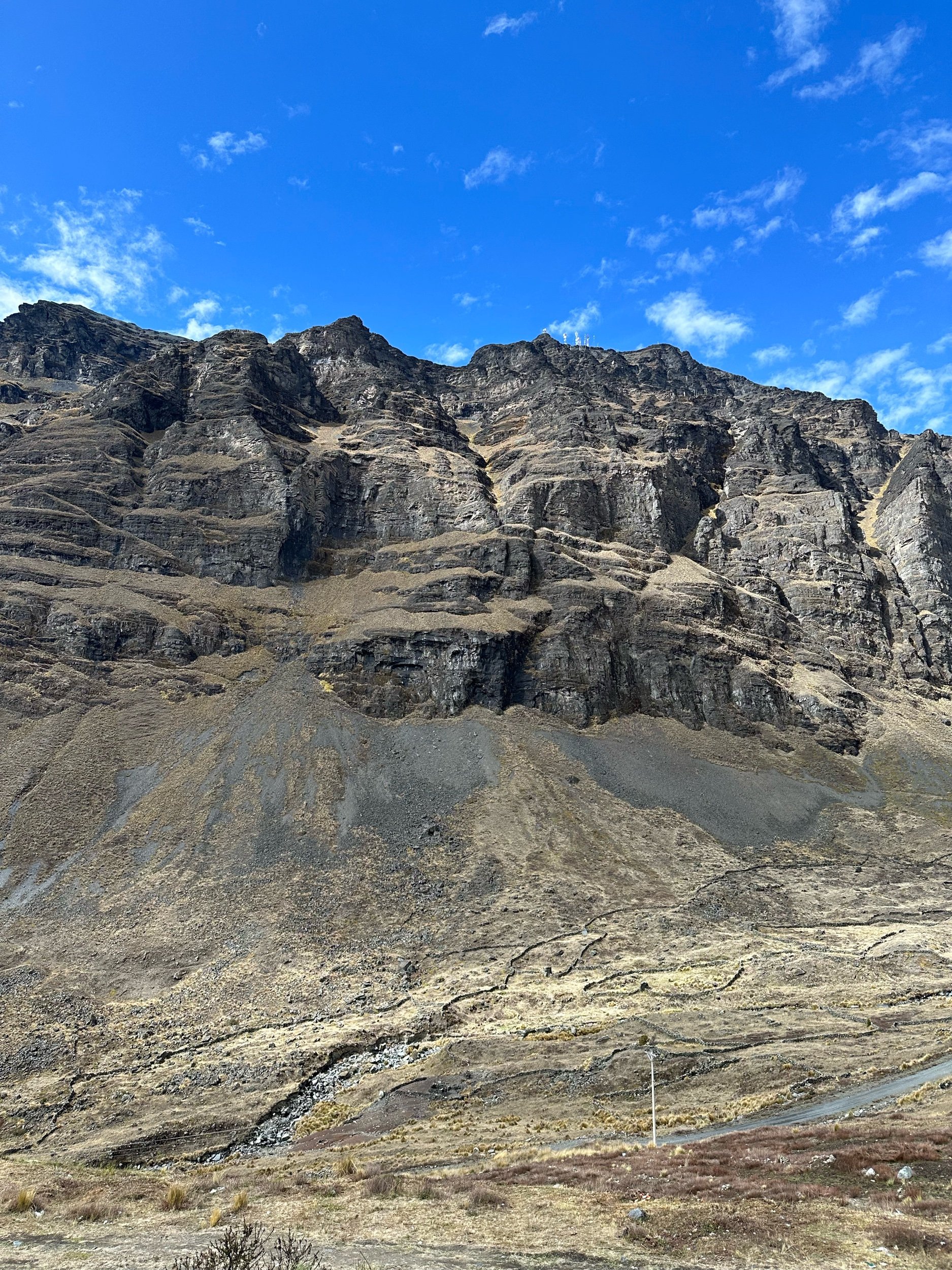
This was where the new highway split from Death Road and the madness began. Susan decided to test out the safety gear (helmet, elbow pads, knee pads, thick padded jacket & pants) and took a tumble on the first turn. A bug flew in her nose and she gripped the ultra sensitive and well working front brake too hard causing the bike to stop but she kept going. It took a second to recover but no major damage and off we went continuing down the mountain! We got super lucky with the weather (it snowed at this location 2 days ago and often rains for the whole ride down at this time of the year) and had incredible views of the mountains and valleys as we descended all the way down to 1200m/4000ft in just 19 miles of riding. ScreamingRiding on the edge of cliffs with a 2000ft drop was crazythrilling but honestly the road was plenty wide to feel safe riding a bike at your own pace. Its thinnest section was only 11ft wide which was still fine for a bike. Two cars driving past each other? No freaking way. But it was a thrilling and enjoyable bike ride down the mountain. Our guide, Christian, was with us the whole time and took some incredible photos of us cruising down the mountain and our driver, Israel, was always behind us in the van with extra equipment and our bags in case we needed anything. At the end of our bike ride we stopped at a village in the jungle for a cerveza and I'll be damned if that wasn't the best tasting beer of our lives. We drove home along the new highway and sure enough got rained on the whole way home. At the top of the pass where we started our bike ride there was new snow on the ground! Like pretty much everything on this trip we had perfect timing through pure dumb luck but we were glad to enjoy it.
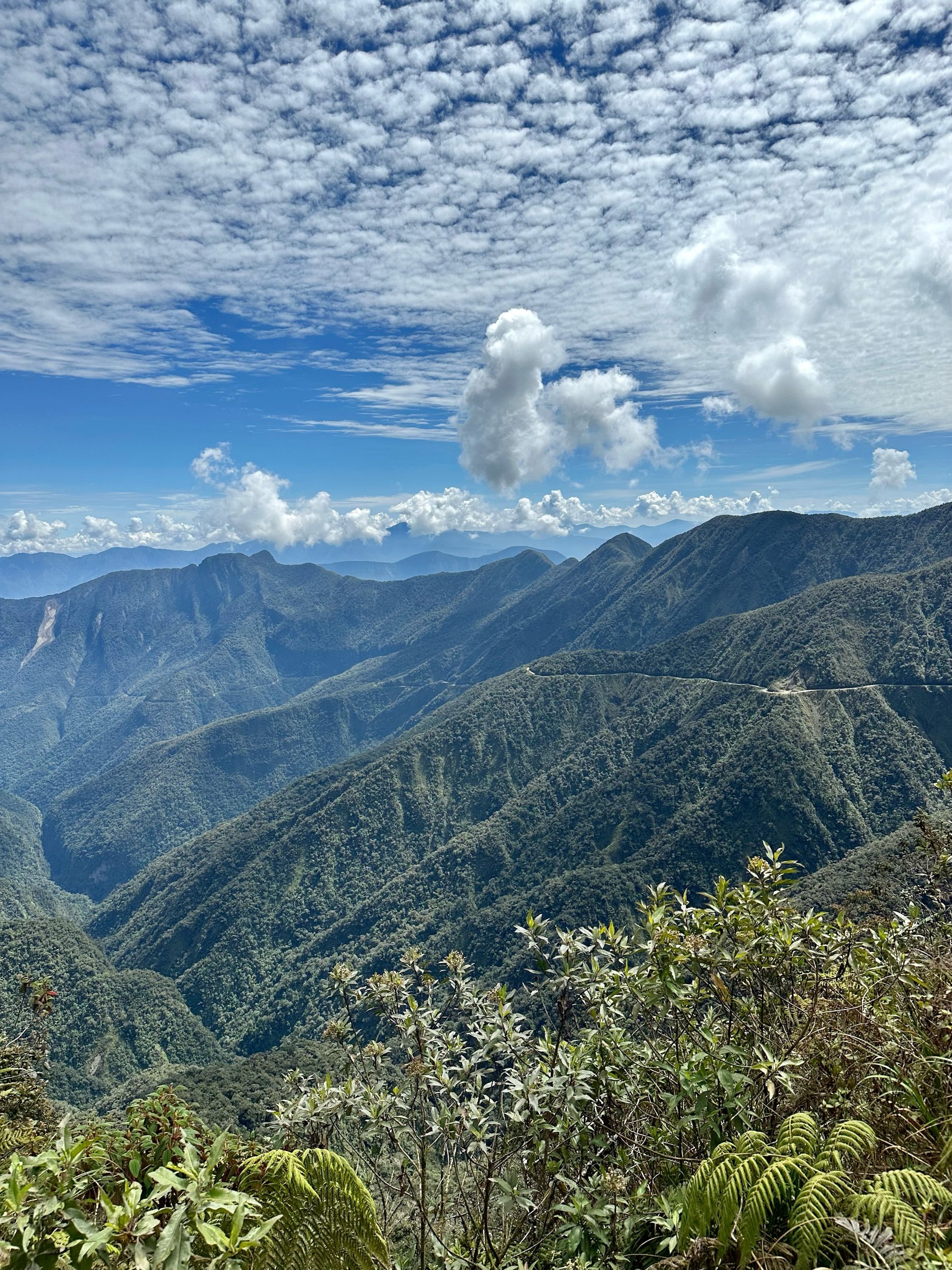

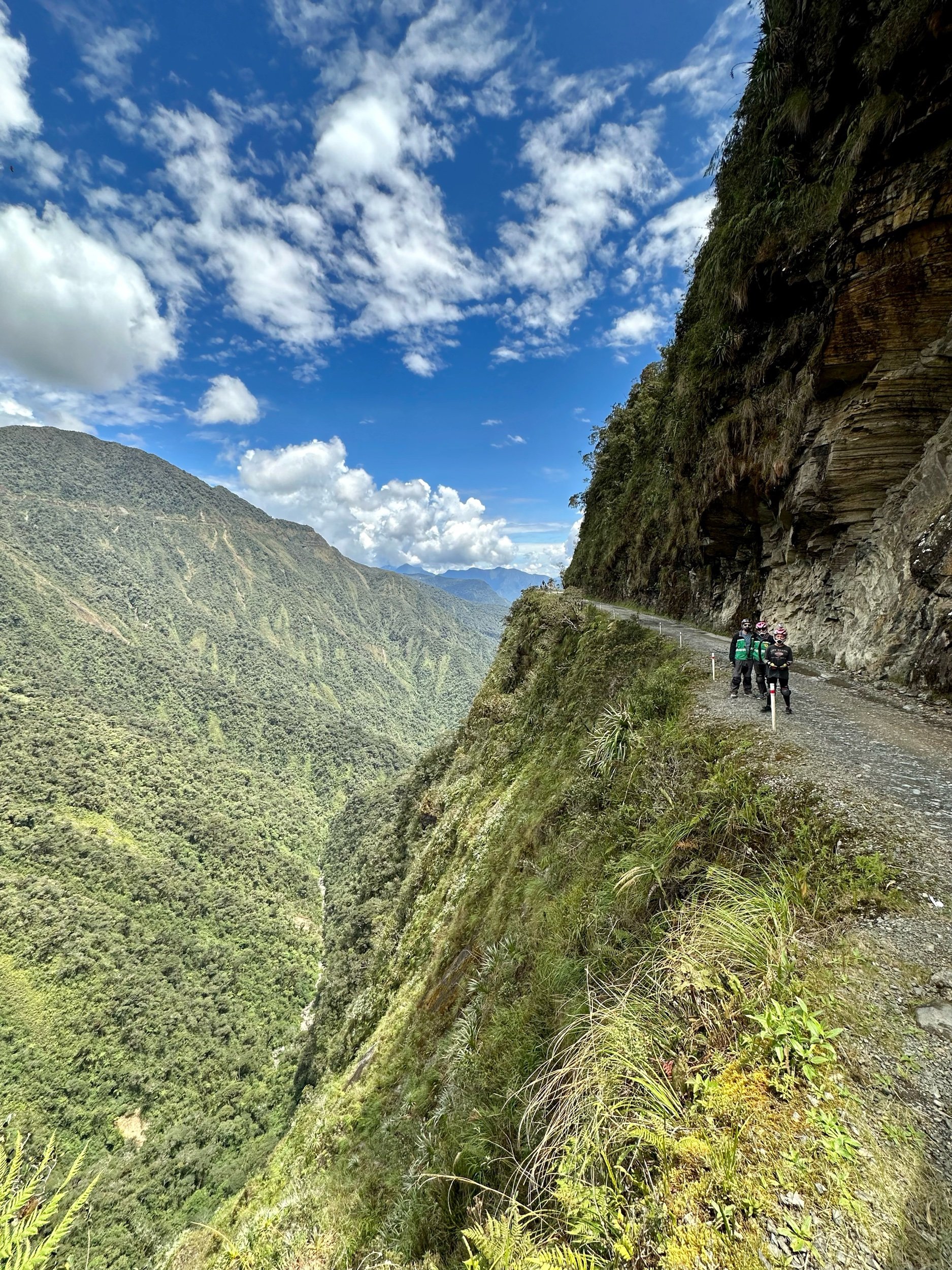
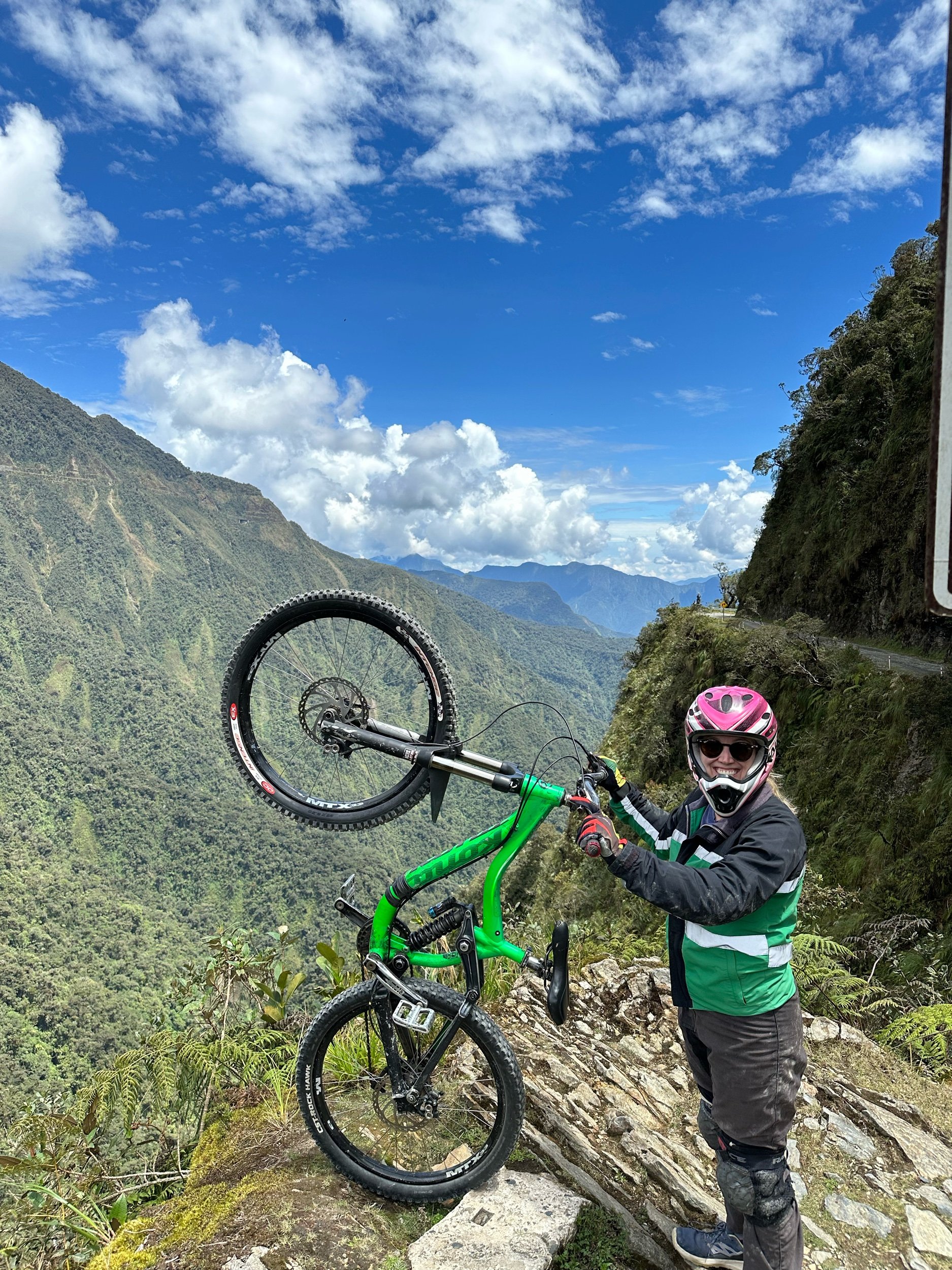
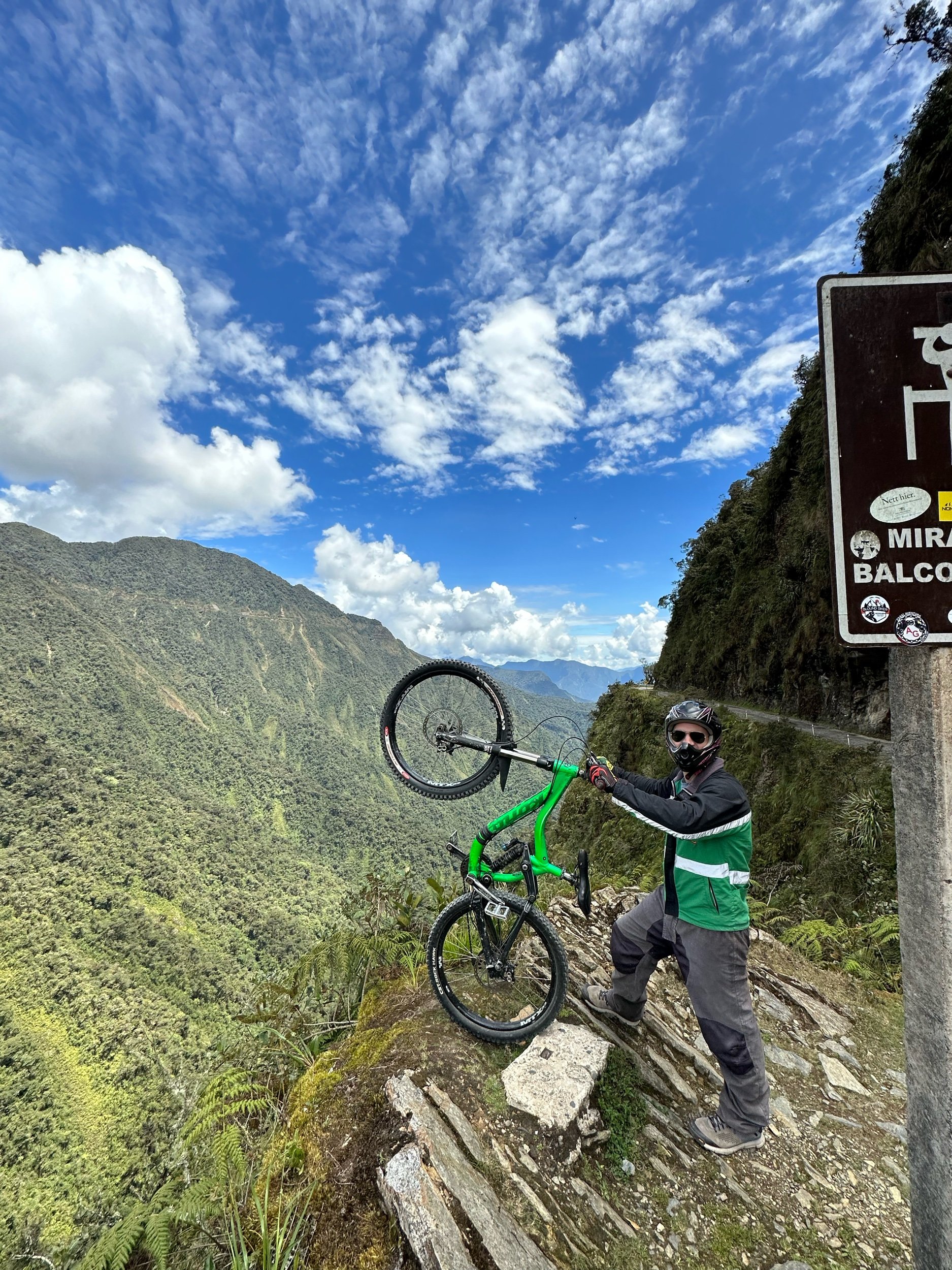
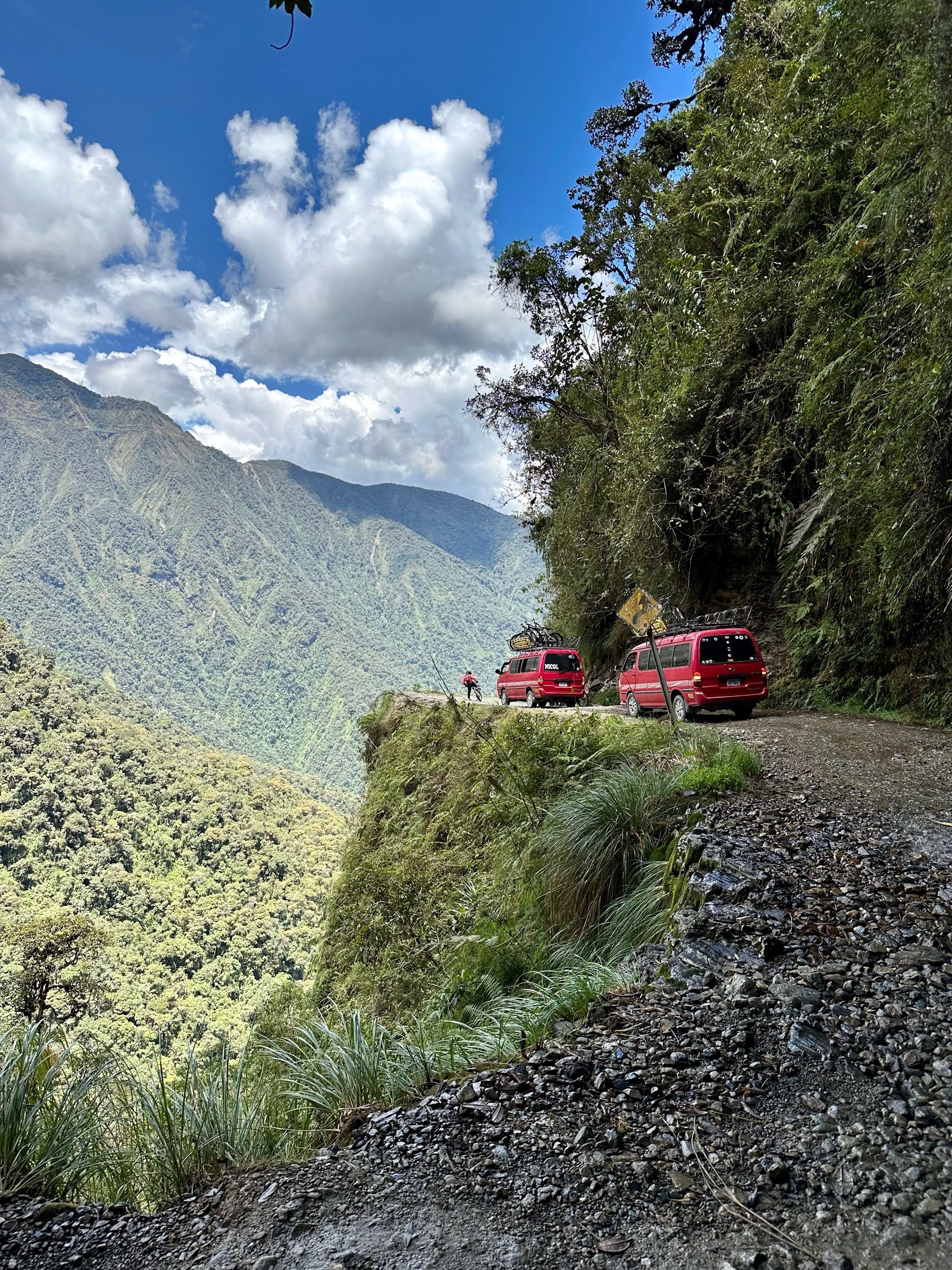
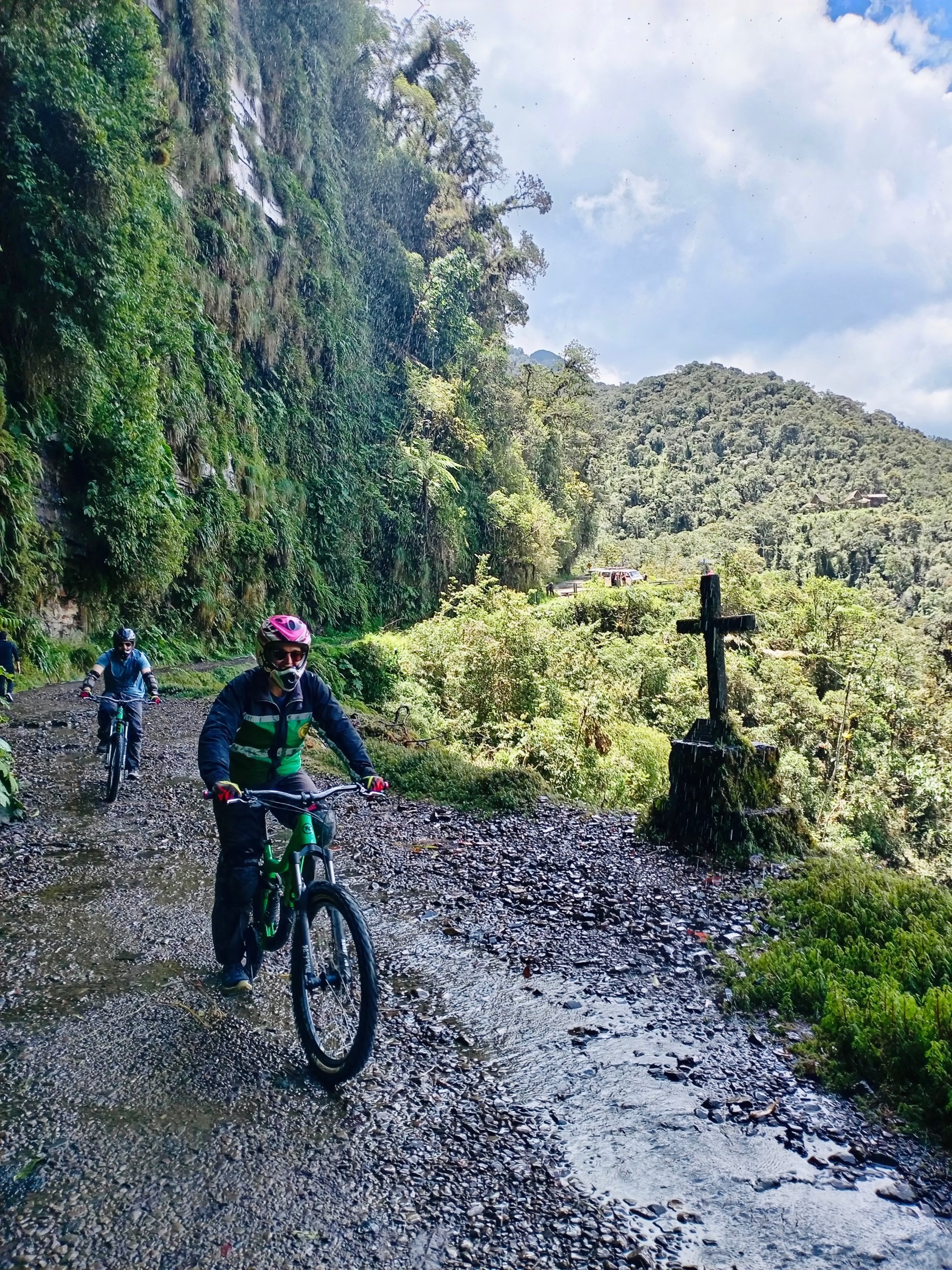
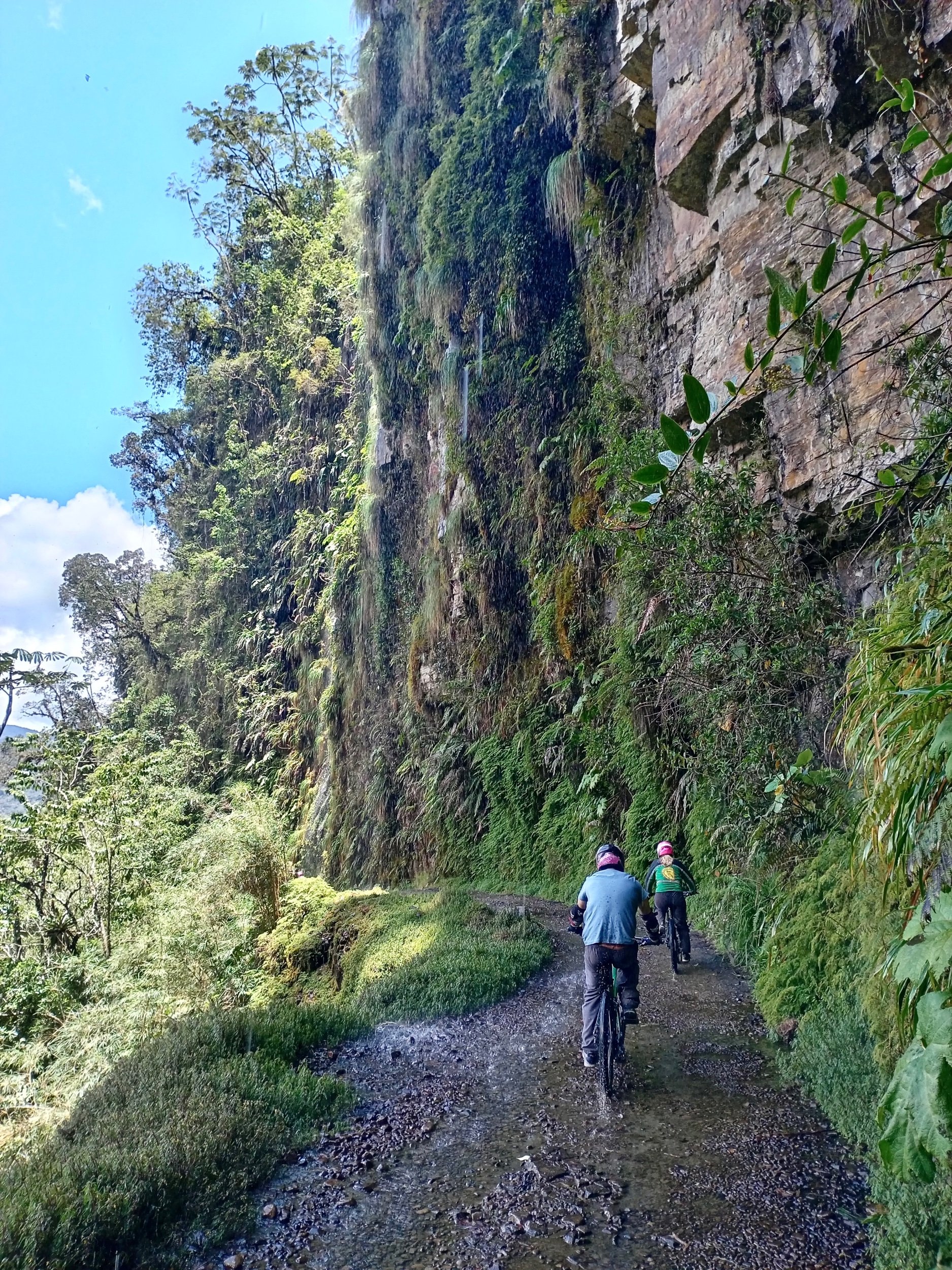
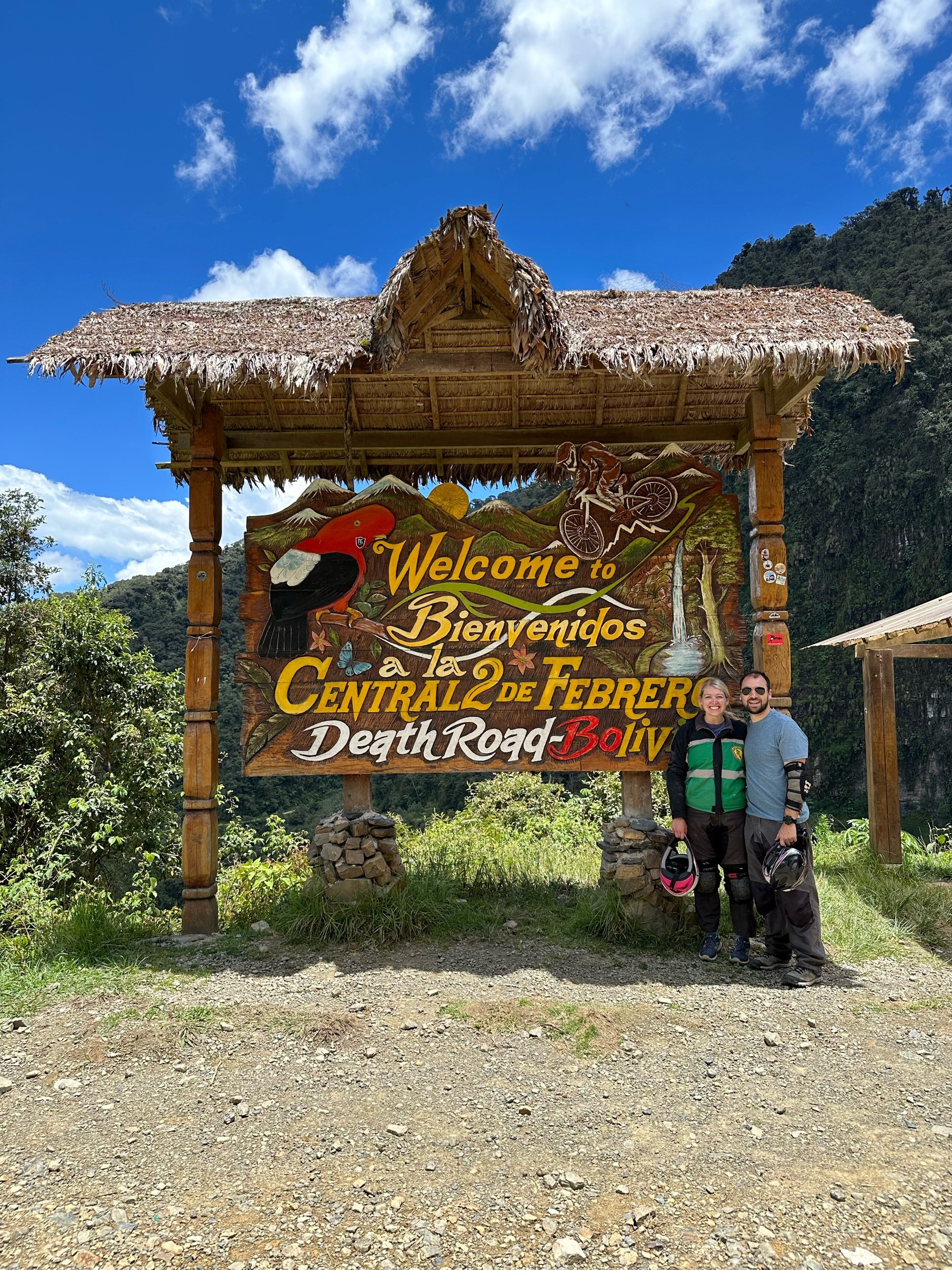
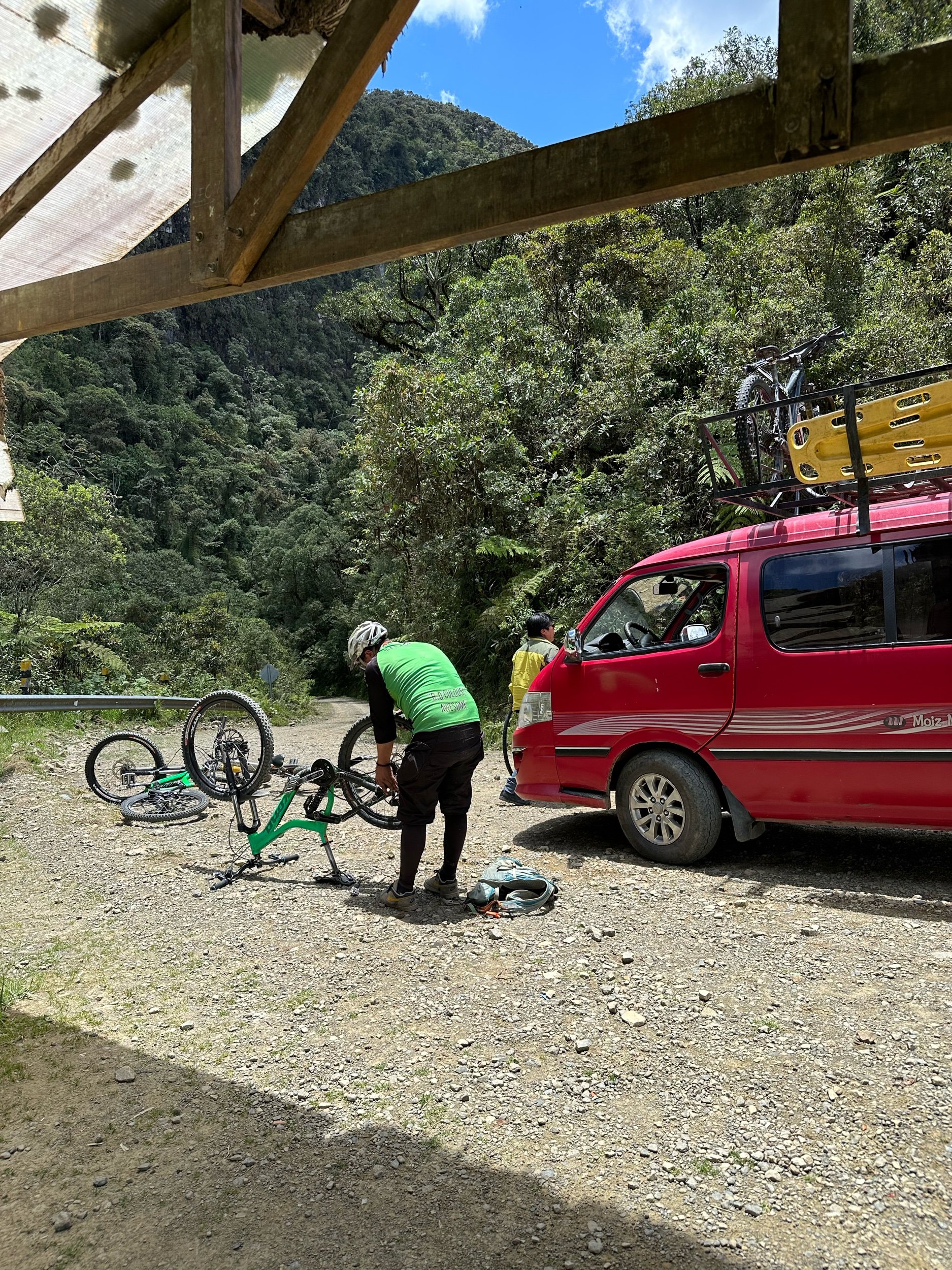

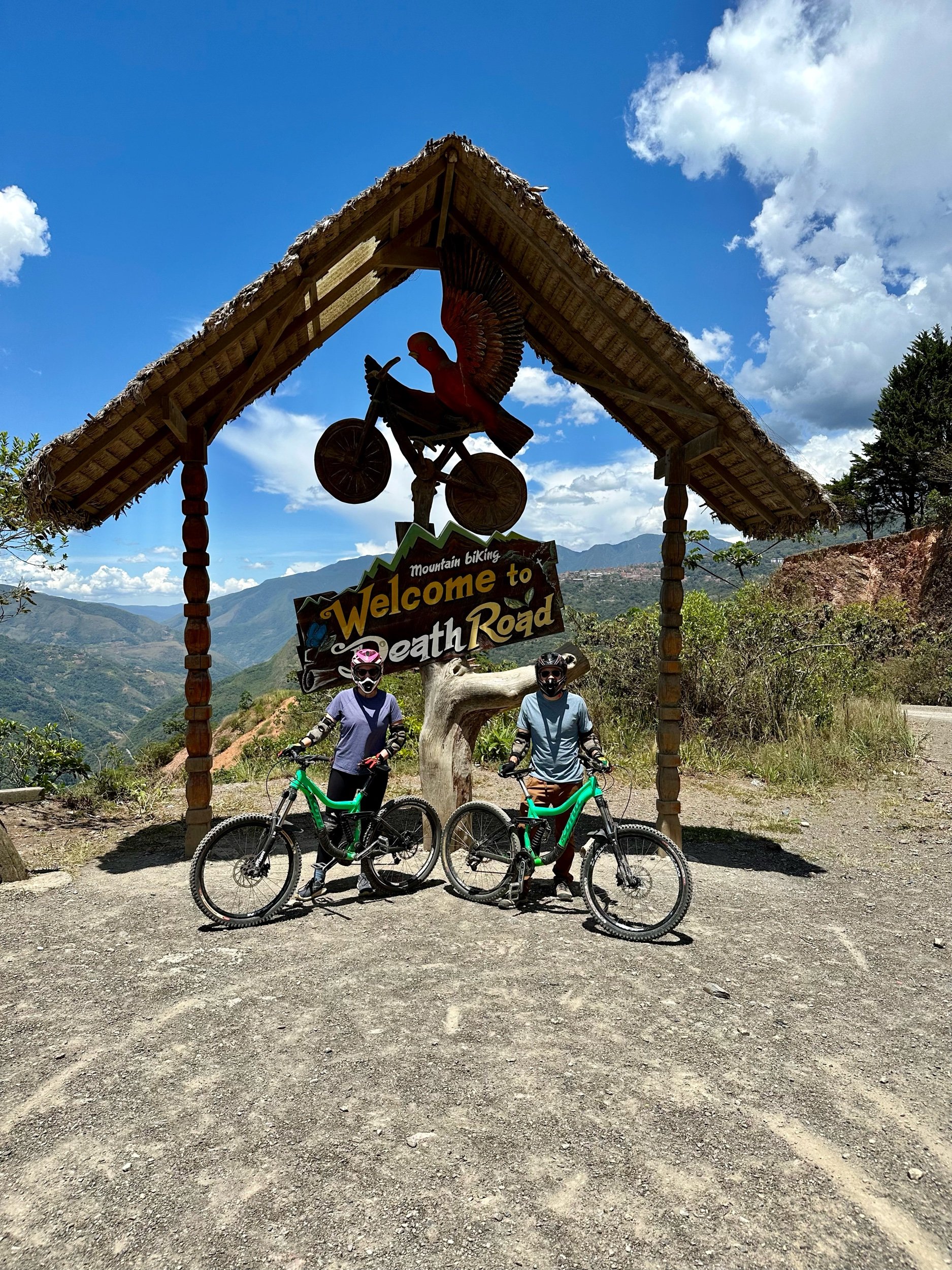
We had one full day left in La Paz before an overnight bus to Uyuni, a town in southern Bolivia famous for its salt flats. We really only had one plan for the day; eat some delicious food at Gustu. We road the green line of the telferico to the San Miguel District of town, a wealthy suburb of La Paz. Gustu was another Bolivian tasting menu (we didn't think we were food snobs but I'm sure all y'all reading will agree we are big time snobs now, sorry) restaurant. We had incredible dishes like a mango & trout ceviche with chestnuts from the Amazon, smoked llama, a lamb tamale, pulled pork with roasted urucu (a bolivian pumpkin!), and a marshmallow and acai ice cream desert. Our table had a view of the kitchen and we had a great time watching them prepare our dishes. All we said the whole lunch was “oh my god you have to try this” back and forth to each other.
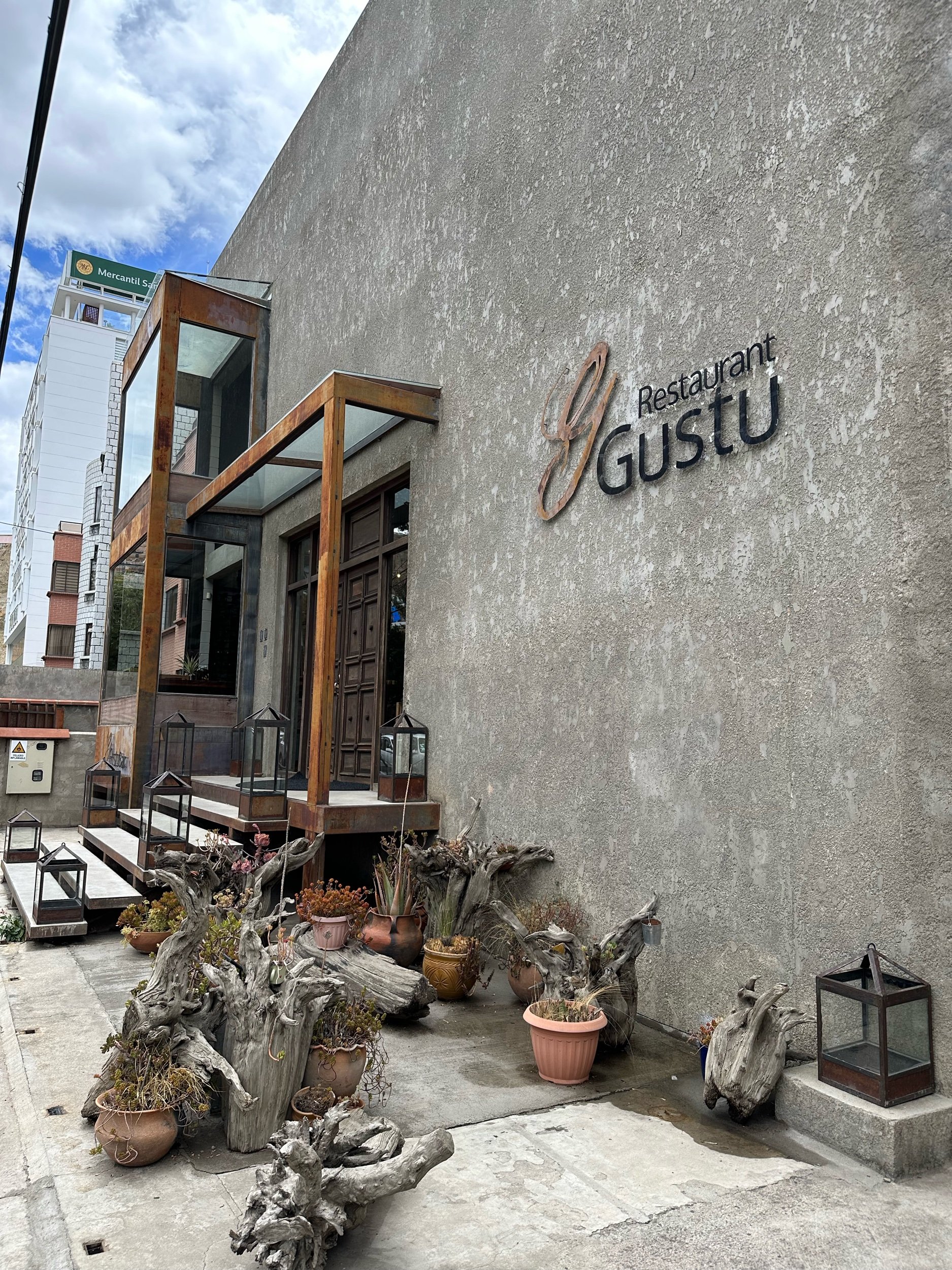

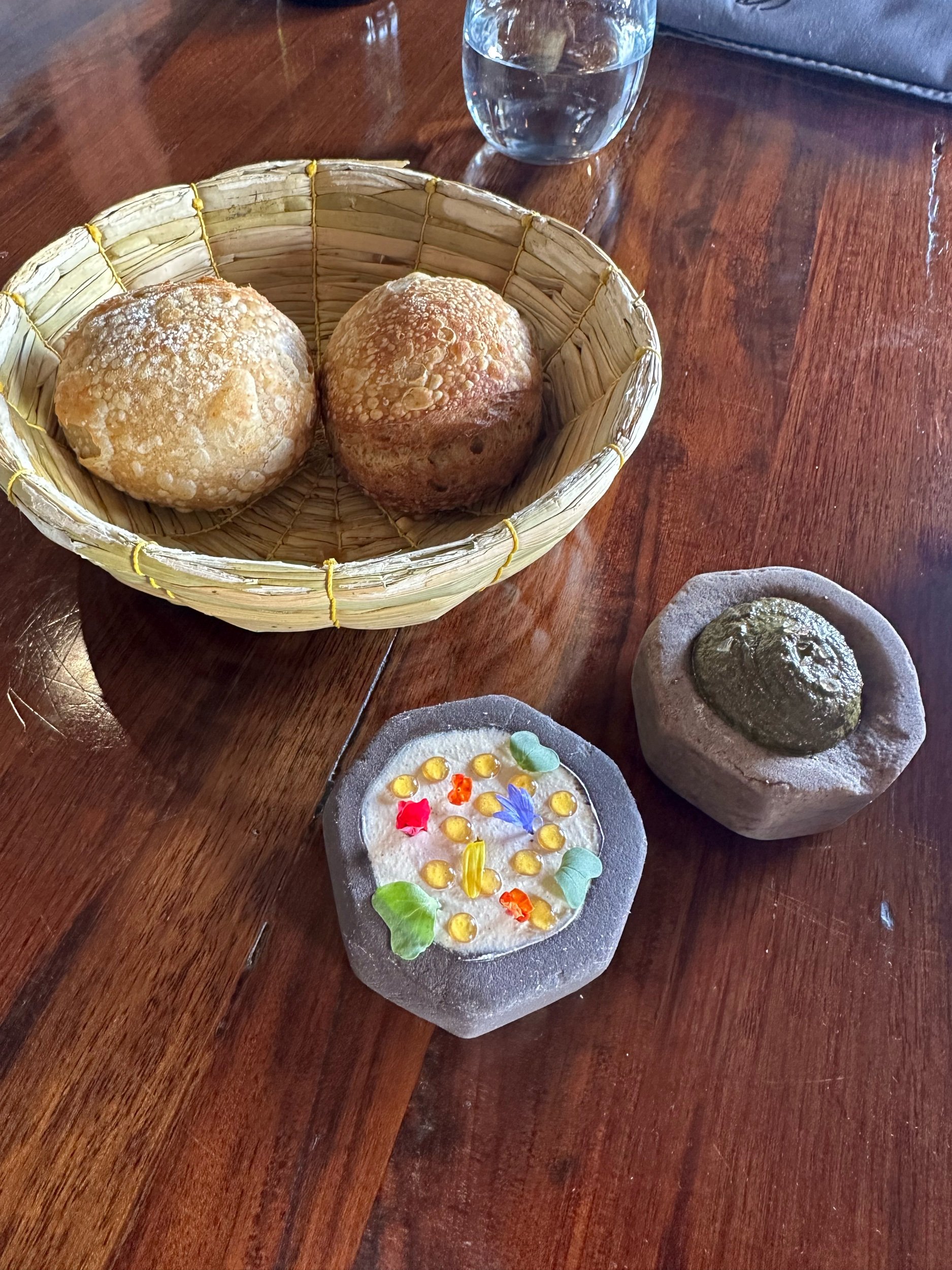
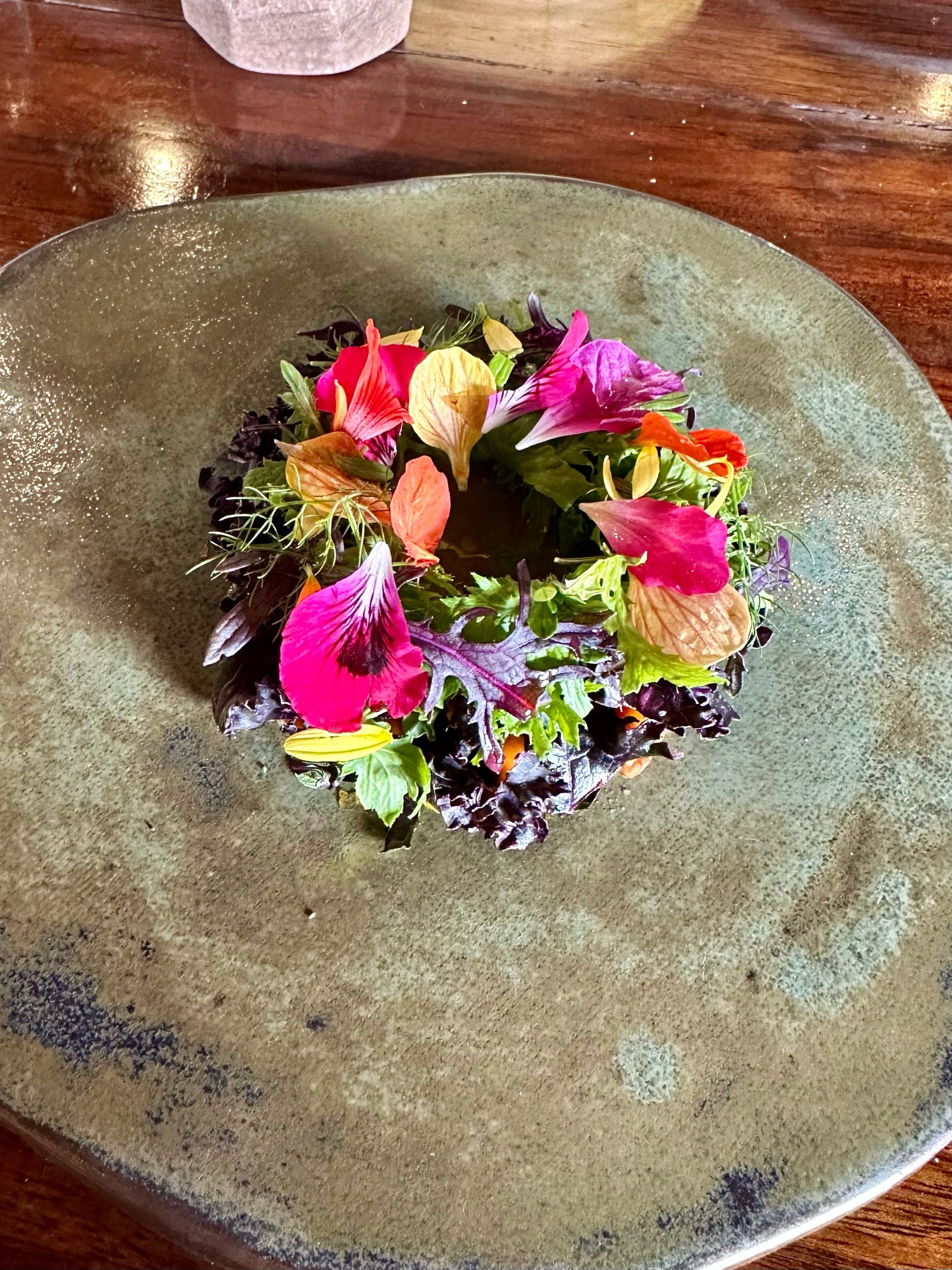
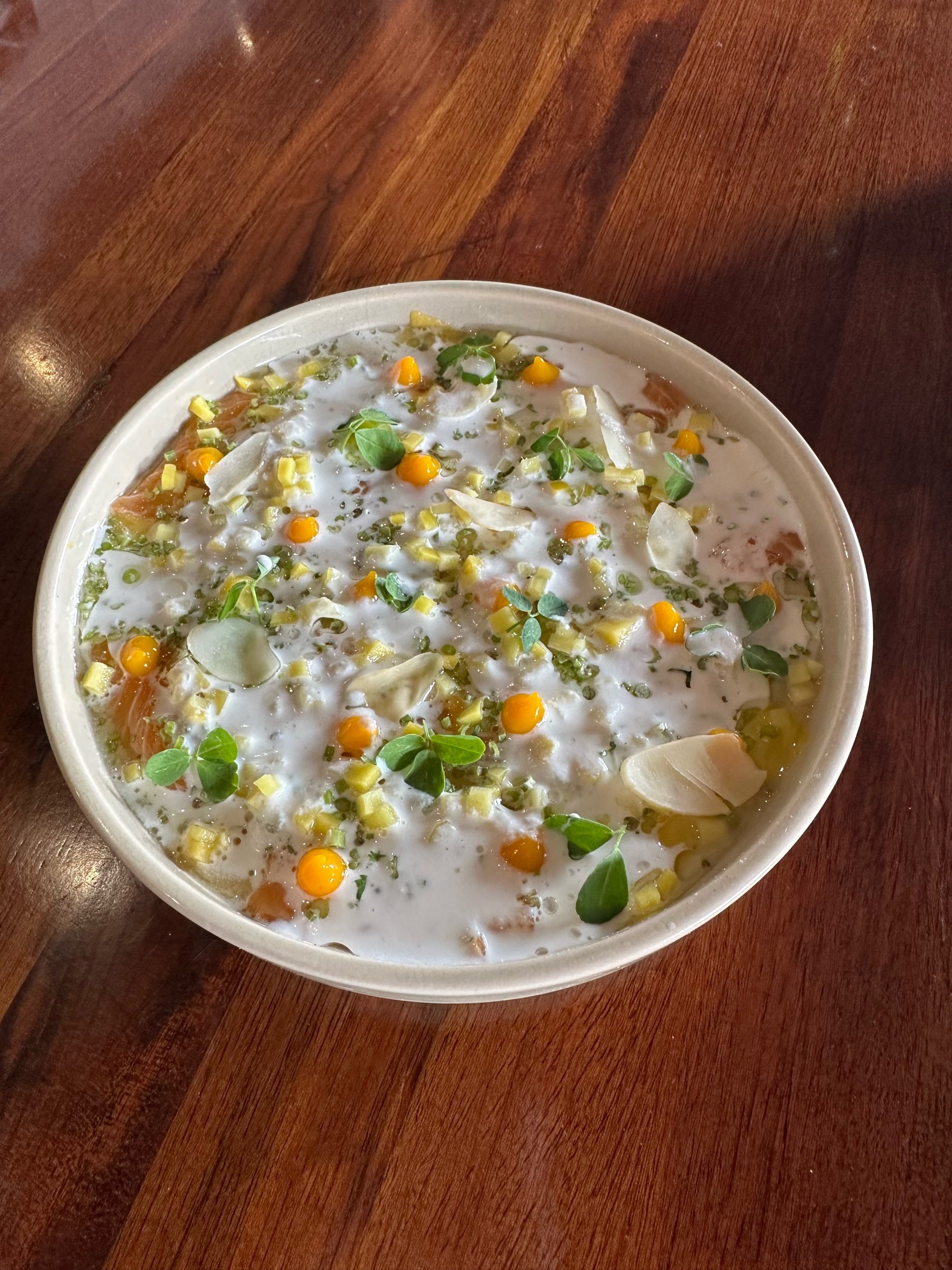
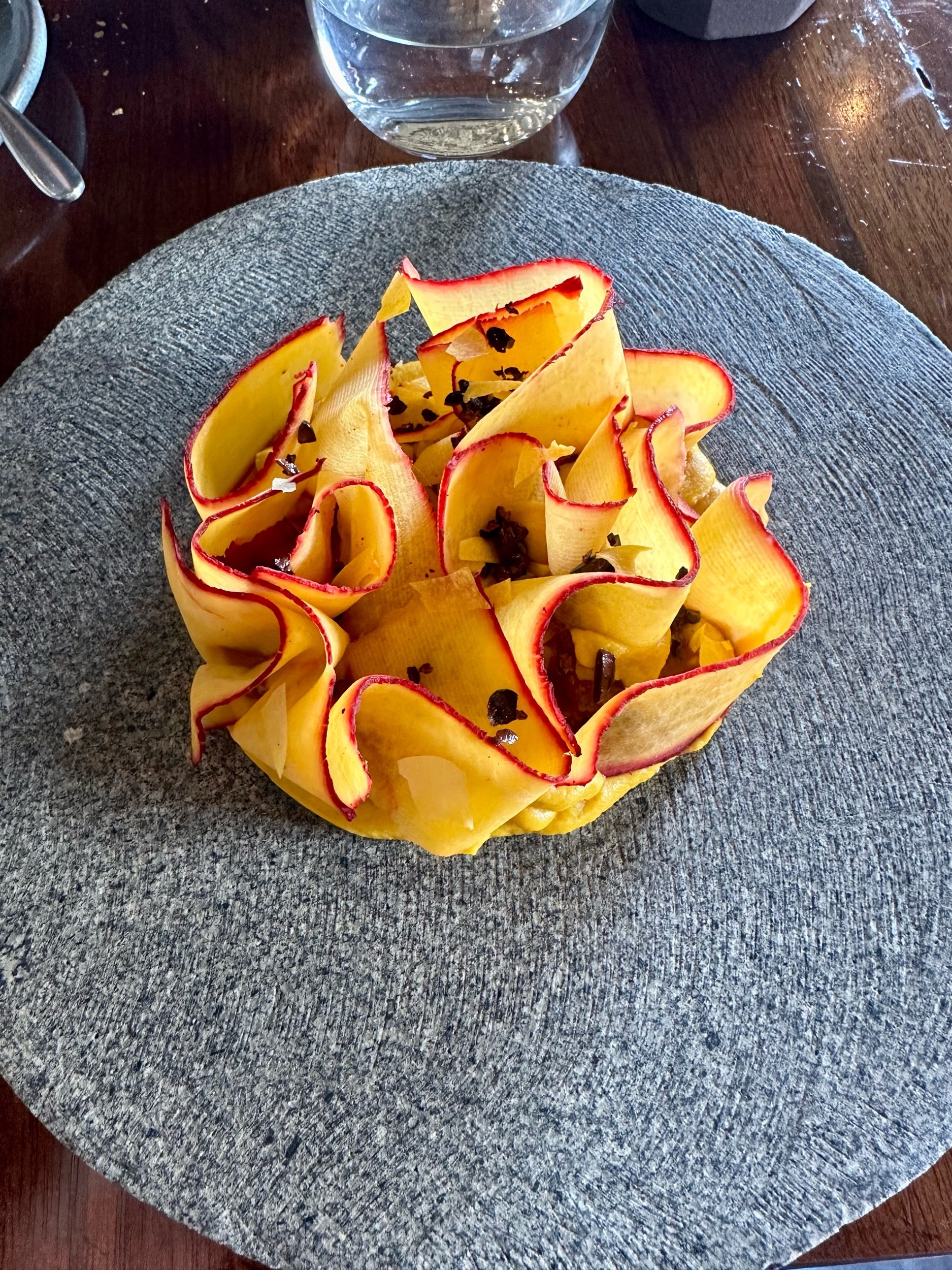
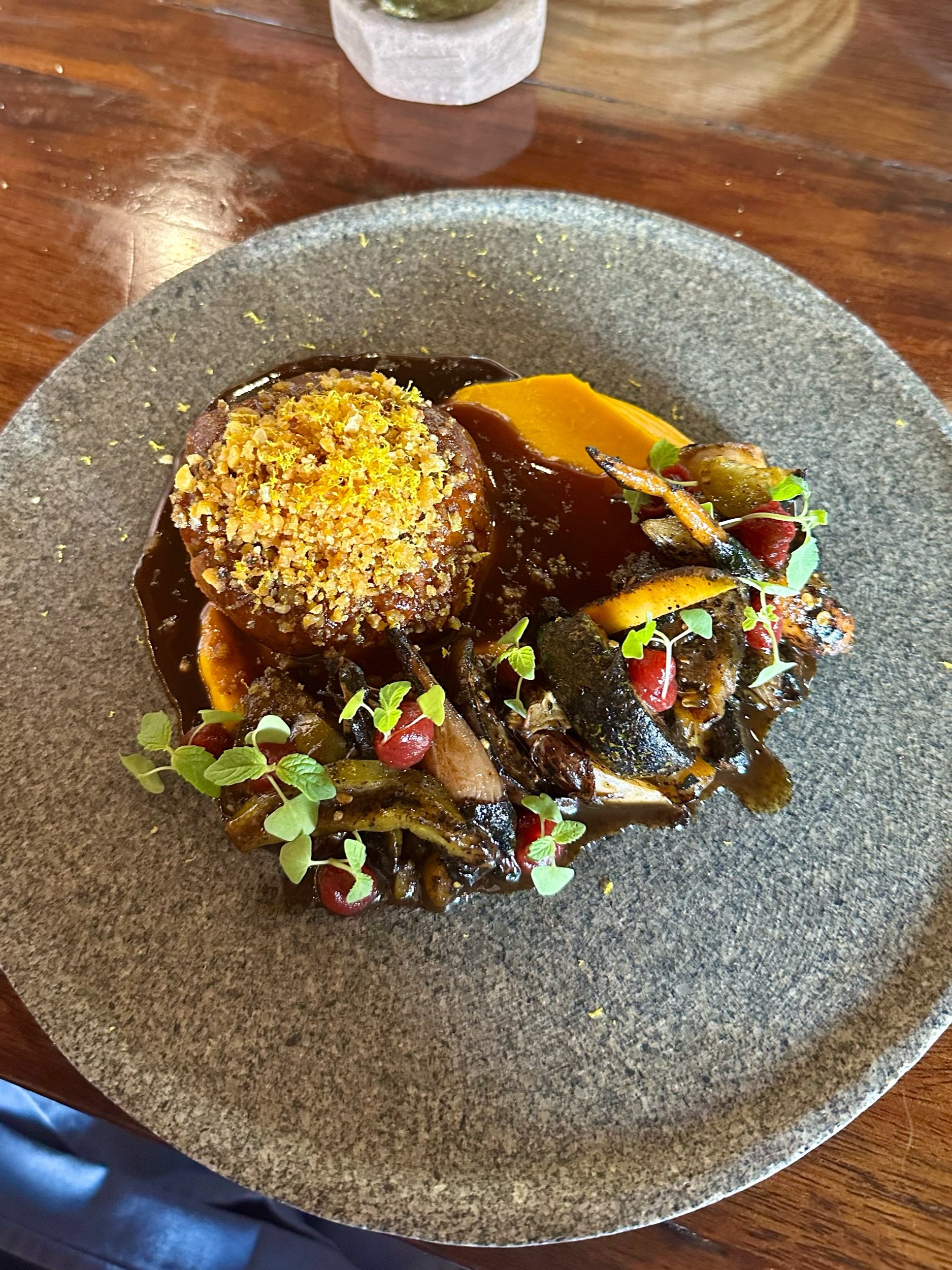

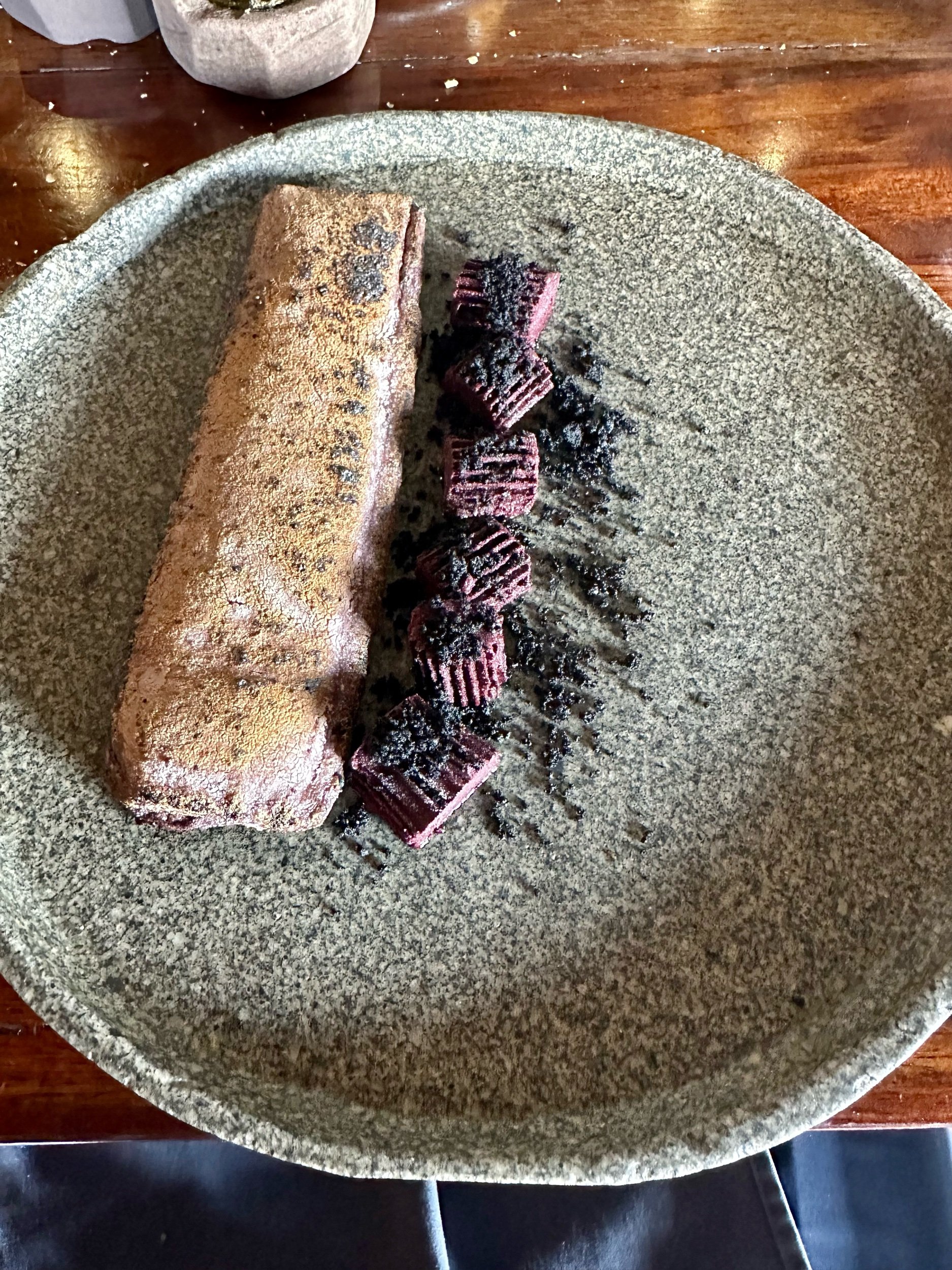
After lunch we went back to our hostel to watch the world cup game (go Argentina!!) and wait for our overnight bus. We were very surprised by all that La Paz has to offer and only scratched the surface of the culture, food, and adventure available in this city. We can't wait to come back someday!
If you want to get notified when we publish a new post don’t forget to subscribe to our newsletter at the bottom of the page or follow us on instagram!
